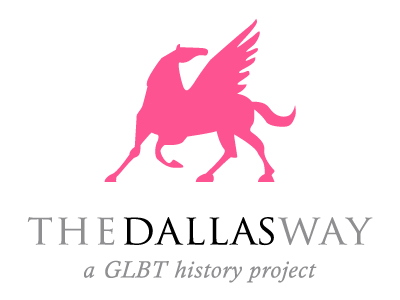
UNT Libraries to Receive Archives from The Dallas Way Agreement
The Dallas Way, a nonprofit organization dedicated to gathering, storing, organizing and presenting the complete history of the city’s gay, lesbian, bisexual and transgender community, has entered into an agreement with the University of North Texas Libraries to ensure that current and future materials collected by the organization will be permanently archived, digitized and made accessible to the public. The Dallas Way, a nonprofit organization dedicated to gathering, storing, organizing and presenting the complete history of the city’s gay, lesbian, bisexual and transgender community, has entered into an agreement with the University of North Texas Libraries to ensure that current and future materials collected by the organization will be permanently archived, digitized and made accessible to the public. Created in 2011, the Dallas Way consists of lay historians who interview members of the LGBT community and record their experiences, and present some of the stories to the public through its Outrageous Oral storytelling series. The UNT Libraries will receive audio and video recordings of the interviews and Outrageous Oral events as well as books, newspapers, meeting minutes, photographs, promotional posters and other materials acquired or created by the Dallas Way. The materials will be known as The Dallas Way LGBT Collection of the UNT Libraries. Dreanna Belden, the UNT Libraries’ assistant dean for external relations, noted that board members of The Dallas Way “are very well-connected in the community and have been integrally involved in the formation and inception of several iconic Dallas gay organizations,” including the Dallas Gay Alliance, the Foundation for Human Understanding and the Turtle Creek Chorale. To learn more, see the full article in UNT News: UNT Libraries to receive archives from The Dallas Way Agreement signals start of organization’s archive collection. external_relations_in_the_news_collection_highlight
Posted:
12/13/2013
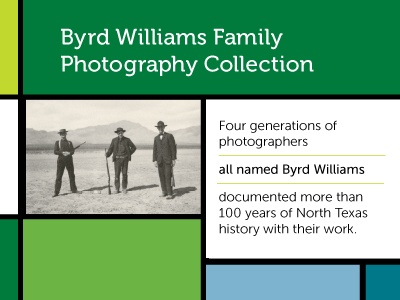
Byrd Williams Family Photography Collection
Four generations of photographers – all named Byrd Williams – documented more than 100 years of North Texas history with their work. Now, UNT Libraries has acquired their collection, consisting of over 10,000 prints and 300,000 negatives. Four generations of photographers – all named Byrd Williams – documented more than 100 years of North Texas history with their work. Now, UNT Libraries has acquired their collection, consisting of over 10,000 prints and 300,000 negatives. The materials include commercial and studio photography, western landscapes, documentary studies, and fine art photography. Family correspondence, artifacts, and a collection of cameras were also donated by Byrd Williams IV. Byrd Moore Williams owned a hardware store in Gainesville, Texas. He also sold cameras and operated a darkroom in his home. The earliest prints in the collection document the Gainesville area. Byrd Moore Williams, Jr. (Byrd Williams II) started his photographic career in college at the University of Texas (1905-1907). One of the photos in the collection shows the young Williams in his dorm room, photo prints taped to the walls. Williams II went on to career in engineering, documenting many major projects, including the construction of the San Antonio River walk with his camera. Byrd Williams III opened a photo service in Fort Worth. The collection contains a large number of studio prints as well as prints documenting the family’s growing interest in artistic photography. Williams III’s collection includes a significant series of prints documenting women at work in Fort Worth during the 1930s. As a fourth generation photographer, Byrd Williams IV continued in his father’s footsteps—sometimes literally, by shooting images of the same street corners in Fort Worth 40 years later. Williams’s career has included street scenes, portraits of gun crime victims, and televangelists, among other subjects. Williams is currently a photography instructor at Collin County College and a prolific artist, exhibiting locally as well as internationally. The Byrd Williams Family Collection is valuable for its historic subject matter as well as its artistic merit. The use of photographic processes and techniques unique to each photographer – from mammoth plate negatives to family snapshots – tell the story of the development of photography from a hobby to a career to an artistic pursuit within the Williams family. The collection is currently being processed and will be available for research use in the near future. To learn more, see the Fort Worth Weekly article: UNT Acquires Williams Collection and the CBS 11 News video and article: UNT Receives Huge, Historic Photo Donation. special_collections_in_the_news_collection_highlight
Posted:
12/05/2013
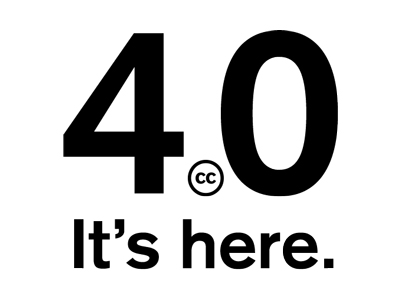
Creative Commons 4.0
Creative Commons (CC) released their 4.0 versions of licenses on November 26, 2013. CC initially planned this release for December of 2012, but better late than never. Creative Commons (CC) released their 4.0 versions of licenses on November 26, 2013. CC initially planned this release for December of 2012, but better late than never. CC still offers its six basic licenses (CC BY, CC BY-SA, CC BY-ND, CC BY-NC, CC BY-NC-SA, and CC BY-NC-ND), which look the same; and CC also offers its CC0 tool for public domain use. However, CC updated each license to improve its usability; address other non-copyright issues such as sui generis, privacy, publicity, and moral rights; simplify attribution; allow for licensor disassociation; provide opportunities to cure a breach; and to offer user-friendly lingo. Improved usability The CC 4.0 licenses improve the usability by offering more portability. This means each license is now interpreted based on standards of international treaties rather than being established around just one country’s copyright laws. Thus, the 4.0 group of licenses should be more usable and interpretable for denizens of numerous countries. Sui generis, privacy, publicity, and moral rights The CC 4.0 suite of licenses also directly addresses other rights outside of copyrights such as sui generis. Sui generis database rights grant qualifying database creators a right to prohibit the extraction and reuse of a substantial portion of a database. Sui generis rights are granted to database makers who spend a substantial investment of time and resources in generating a database. Sui generis rights are not as common in the United States as they are in Europe. The CC 4.0 licenses offer original creators the option to allow subsequent users the right to use portions of created databases, and the CC 4.0 licenses explicitly describe how such material may be used while still protecting any reserved sui generis rights. Past versions such as the 3.0 licenses did not directly address sui generis rights. The 4.0 suite of licenses also explicitly waves moral, publicity, and privacy rights for creators. Moral rights are understood differently in varying countries, however, in general they include a right to have works published anonymously or pseudonymously and a right to avoid derogatory treatment of their work (such as mutilation). Simplification of attribution The CC 4.0 licenses also simplify the attribution requirement in all licenses. With the new suite of licenses a link to a separate page for attribution information will suffice. With past versions of CC licenses, licensees often encountered confusion as to whether they had to include the creator’s name, the title of the work, a link… all on their derivative of an original work. The new 4.0 CC licenses remove the guesswork and allow a licensee to satisfy the attribution requirement by simply linking to a page with clear attributing information. Refusal of name and likeness The 4.0 licenses now allow for an original creator to mandate that their name and likeness not be associated with any reproduction of their original work. Thus, with this suite of licenses an original creator may mandate that his or her attribution information not be placed on revisions or verbatim reproductions of their works. Permitting a cure for breaches Most legal contracts allow thirty days or more as explicitly stated in a contract for a breaching party (a party who makes a mistake per contract terms) to cure the breach (to fix their mistake). The 4.0 CC licenses now allow thirty days for a breaching licensee to cure a breach. So, technically, with the 4.0 CC licenses, they effectively terminate at the time a licensee commits a breach. However, if a licensee corrects the breach within 30 days of discovering the breach, the CC license is reinstated. Notice, there does not appear to be language that states “or should have noticed the breach” on the CC site. I assume a scenario will eventually arise where a breaching party discovers their breach months or longer (years?) after the breach occurred, and at that time the licensor may state that such a time period is too long to cure a breach. Most contracts state “a breaching party has 30 days to cure after discovering a breach, or when they should have reasonably discovered the breach” to prevent perpetual curing of breaches. No such “reasonable discovery” language is found in the new CC suite of licenses. Offering clear language, and offering a fix to bypassing the NC mandate A common complaint I often hear about the 3.0 licenses is that the human readable layer still is not cogent. Therefore, this latest version of CC licenses attempts to provide better laymen’s terms in the language of the actual license (human readable layer) so that the terms of the license are understandable. This version also fixes the question of repetitive downstream adaptations of the original CC-BY-NC. Now, for any CC-BY-NC licensed item that is subject to repetitive adaptations, each rendition of the item must also contain the NC portion in the license. Fair use greater in Israel than the United States? Related to a matter separate from CC, in light of the oral argument that took place in the Eleventh Circuit of the United States Court of Appeals a couple of week ago, mentioning a case in a Jerusalem District Court decided on November 28th seem apropos. In this case, the district court approved a settlement between Hebrew University and two separate publishers. In the terms of the settlement it is stated that publishers have recognized as fair use the inclusion of digital excerpts from books and full articles in e-reserves systems, provided that access is limited only to students that are registered in the particular course using an ID number and a password. Sound familiar? Hebrew University and the publishers in this case agreed that use of such content establishes fair use and does not require permission from publishers or payment. Additionally, the publishers and Hebrew University agreed that the production of course packs containing excerpts from books and articles (as long as the course packs are produced on demand, sold at cost, and only to students enrolled in the course, academic staff, and academic administration) also constitutes fair use. Further, this agreement states the academic utilization of entire articles or 20% of books is deemed fair use. It must be noted that per this judicial settlement, both parties have agreed to revisit this agreement in 2017. This is a remarkable accomplishment for fair use in Israel. Hopefully, the justices on the Eleventh Circuit take note of this because they seemed to be convinced by publishers in the recently argued Georgia State appeal that course packs were not fair use, and that excerpts of or full-text items placed on e-reserve were not fair use and equated to a course pack sold commercially. public_services_in_the_news
Posted:
12/04/2013
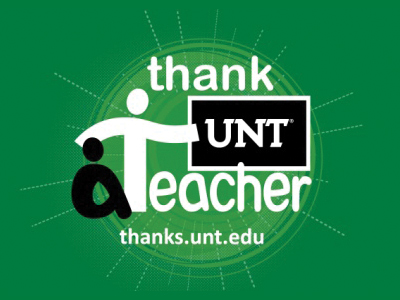
Students Can Thank a Teacher
Outstanding teachers at UNT do make a difference for students. They make learning challenging and fun; they are available when needed; and they weather many storms with students to foster bright futures. When teachers have made this kind of a difference, many students wish for a way to say “Thanks”. UNT students have a wonderful way to say “Thanks” through the “Thank a Teacher” Program here at UNT. From September 23 - December 13, you will be able to complete the form at Thank a UNT Teacher to share your thanks with your teacher(s). You may complete as many of these forms as you wish (one for each teacher you wish to thank). You may also choose to remain anonymous. Your notes will be sent to your teachers as part of a letter of recognition from the Provost! in_the_news
Posted:
11/20/2013
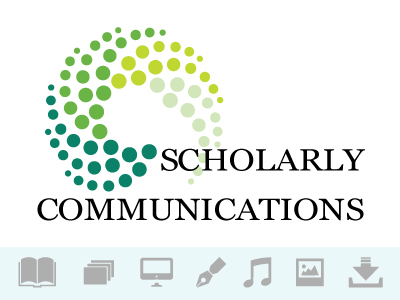
A win for Google and for libraries, a bigger win still to come? Perhaps...
Today, Judge Chen in the United States District Court in the Southern District of New York held that Google’s scanning of over twenty million books for research purposes, snippet views, data mining, text mining, bibliographic research, etymological research, to aid in viewing for handicapped… is fair use. But, wait, the Authors Guild is already talking about an appeal. History Since 2004, Google has partnered with the New York Public Library, the Library of Congress, and numerous university libraries to form the Google books program. This program has produced over twenty million different scanned copies of print books. Google provides various forms of access to each of these books based on agreements with the entity housing each book. Some views are multi-text, and other views are limited to a snippet view. The works contained in the Google books program consist of novels, biographies, children’s books, reference works, textbooks, instruction manuals, treatises, dictionaries, cookbooks, poetry, and memoirs. As a part of this project Google retained a digital copy of each book and provided each partnering library with its own digital copy of the books it loaned to be scanned. Libraries are not provided digital copies of books owned by other partnering libraries. In September of 2005, the plaintiffs sued Google alleging copyright infringement due to the scanning of copyrighted books and making them publicly available without permission from the copyright holders. In March of 2011, a proposed settlement was rejected by the Southern District Court in New York, because Judge Chen deemed the settlement to be unfair for various reasons. The United States Court of Appeals for the Second Circuit (which is the court to which this case will be appealed) then directed the Southern District Court of New York to decide the fair use portion of this case before ruling further on class certification, which may now be a moot point. So no doubt, today’s ruling will be appealed back to the Second Circuit. However, today, the order filed by Judge Chen of the Southern District of New York disagreed with the Authors Guild, and held that such copying of twenty million books for specific purposes was fair use. Court’s reasoning The court reasoned that the Google books program provided many great social benefits. For example, this project offers an efficient search feature with which individuals may locate books, and groups of books that contain an exact word. Such a feature also provides an efficient tool for data mining, etymological research, syntactic patterns, and bibliographic analytics. Many academicians and students have come to rely on the Google interface to augment interlibrary loan, quickly locating needed sources of information, and locating means with which to purchase them (e.g., Amazon). The court further noted that such reliance on the Google interface has integrated this tool in educational systems and it is now an important facet of information literacy in academia. Also, this project has expanded access to books to underserved populations such as individuals requiring large print, text-to-speech, or Braille conveyances of text. Additionally, the Google books program helps preserve out-of-print and deteriorating works. Lastly, the court even noted that this project benefits publishers and authors by offering links of snippet views that direct readers to Amazon or Barnes & Noble sites where readers may efficiently purchase books. Fair use analysis The court’s fair use analysis displays a detailed analysis anyone could use to determine whether their own use of an item is considered fair. The court examined this project with each factor of fair use as follows: 1. The first factor- What is the purpose and character of use? The Google books program use is transformative in that it provides comprehensive indices that enable efficient research and finding aids, data mining, text mining, and robust research. Further, the displaying of snippet views is transformative as this project uses words for different purposes than did the copyright holders to direct users to a broader selection of works. The court further noted that even though Google is a commercial entity, which may usually weigh against the first factor of fair use, Google is not selling the scanned copies it makes, or the snippets it displays, and it does not run ads on the snippet pages, thus overall its purpose and character of use strongly weigh in favor of fair use. 2. Nature of copyrighted work – The works scanned are published, both fiction (7%) and non-fiction (93%). The court notes that the more fiction works that are being scanned, the more this factor weighs against fair use. However, in this case only 7% of the works are fiction, and all of the works are published. Thus, the court held that Google also meets the second factor of fair use. 3. Amount and substantiality of the portion used – How much of the work is used? Google scanned the entire copy of each book in this collection. Even though Google only provides snippet views of these books and has safety mechanisms in place to prevent a user from completing multiple searches to download enough snippet views to obtain the entire text, the court stated this factor weighed slightly against Google’s fair use. I disagree with this analysis of this factor in that some courts have held that copying entire works can be fair use if it is necessary to copy an entire work to fulfill a transformative purpose. Perfect 10 v. Google, Inc., 416 F. Supp. 2d 828 (C.D. Cal. 2006). This court even acknowledged that other courts have agreed that copying the full text of items is not infringing when such copying meets a transformative purpose. Sony Corp. of Am. v. Universal City Studios, Inc., 464 U.S. 417, 449-50 (1984); see also Bill Graham Archives, 448 F.3d at 613 (copying the entirety of a work is sometimes necessary to make a fair use of the image). Nevertheless, this court stated that Google did not meet the third prong of the fair use test. 4. The effect of use on the potential market – The court noted that Google does not sell its scans or snippet views, and the scans do not replace a sale. The court seems to reference section 108 preservation copies (although it does not specifically reference section 108) when it states libraries are free to keep the scanned copies of books made by Google that the individual library already owns, and further such scanned copies do not replace a sale. The court additionally notes that the Google project actually augments the promotion of books by helping users locate them and leading them to a site such as Amazon where the book may be purchased. Thus, the court held that Google meets the fourth prong of the fair use analysis. Overall holding Overall, the court ruled that Google met three of the four prongs of the fair use test. Thus, in all, according to this court, the Google book project is fair use. I think the court should have also held in favor of the third prong as Google could not provide this public service if they do not copy the full-text of each source. However, for now this is another great judicial win for libraries, and for Google. But as I am typing this, the Authors Guild has announced it will appeal. This is not a surprise as the HathiTrust appeal at the appellate court level is still pending. The HathiTrust case is highly related to this case as fair use will be a determining factor in examining many of the augmented technologies using full-text scanned items in the HathiTrust appeal. So, many are claiming this is “the” big case, the big win for libraries. It is a big win for libraries, but this is a district court case. A win at the appellate level for HathiTrust and for Google on appeal will be even bigger, as federal appellate court rulings reach broader than do federal district court holdings. I am not making a prediction of how these appeals will come out, but a win at that level or even at the Supreme Court level (do not be surprised if these get appealed to that level) would be even bigger for libraries. We will stay tuned, but for now, OK yes, this is a pretty big win for fair use and for libraries. in_the_news
Posted:
11/14/2013
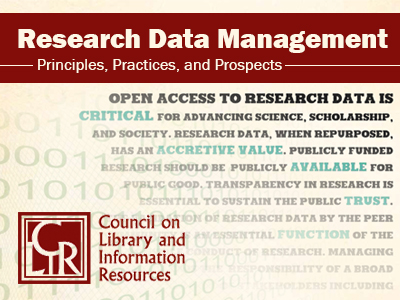
CLIR Publishes Research Data Management: Principles, Practices, and Prospects
The Council on Library and Information Resources (CLIR) has published Research Data Management: Principles, Practices, and Prospects. The report examines how research institutions are responding to data management requirements of the National Science Foundation, National Institutes of Health, and other federal agencies. It also considers what role, if any, academic libraries and the library and information science profession should have in supporting researchers’ data management needs. University of North Texas (UNT) Library Director Martin Halbert opens the report with an overview of the DataRes Project, a two-year investigation of data management practices conducted at UNT with colleagues Spencer D. C. Keralis, Shannon Stark, and William E. Moen. His introduction is followed by a series of papers that were presented at the DataRes Symposium that UNT organized in December 2012. “Research data management is one of the most important new strategic issues facing research universities,” notes Halbert. “Academic libraries now must decide what stance they will take toward this increasingly prominent category of institutional research content. Academic leaders must now begin to make prioritization decisions regarding the preservation of research data, or these important intellectual assets will continue to be gravely at risk.” “The thing that really surprised me from this research was how very few universities have policies governing research data management,” said DataRes researcher Keralis, who is also director for digital scholarship and research associate professor with UNT Library’s Digital Scholarship Co-operative. “At the close of the project it seems there’s a great reluctance to engage with this issue at an institutional level, and that’s going to have to change if these federal mandates continue.” Additional papers in the volume are contributed by Kiyomi Deards, of the University of Nebraska-Lincoln, who provides an overview of data management services at four land-grant research universities. Chris Jordan and colleagues from the Texas Advanced Computing Center summarize several national-scale cyberinfrastructure projects for data management and discuss the relationship of national and regional responses to data management requirements. Anthropologists Lori Jahnke and Andrew Asher examine research ethics and the problems of data sharing. The volume includes a copy of “The Denton Declaration: An Open Data Manifesto,” written in May 2012 by a group of technologists and librarians, scholars and researchers, university administrators, and other stakeholders who gathered at UNT to discuss and articulate best practices and emerging trends in research data management. “The DataRes report comes at a critical moment in the data management conversation,” said Rachel Frick, director of CLIR’s Digital Library Federation program. “I hope our community will use this report to inform and evaluate its work.” The report is available as a PDF download free of charge at http://www.clir.org/pubs/reports/pub160. digital_libraries_in_the_news_publication
Posted:
11/14/2013

Kennedy Assassination Materials Available on The Portal to Texas History
During the hours and days that followed President John F. Kennedy’s assassination in Dallas on November 22, 1963, Dallas Police Department officers gathered numerous eyewitness statements, fingerprints, affidavits… During the hours and days that followed President John F. Kennedy’s assassination in Dallas on Nov. 22, 1963, Dallas Police Department officers gathered numerous eyewitness statements, fingerprints, affidavits, correspondence and homicide reports for not just Kennedy’s assassination, but also the murder of Officer J.D. Tippit the same day of the assassination, and the murder of alleged assassin Lee Harvey Oswald by Jack Ruby two days later. People who vividly remember the events of 50 years ago, as well as younger generations, will soon be able to view these 11,406 pages of investigative materials on the University of North Texas Libraries’ Portal to Texas History. To learn more, see the full article in UNT News: UNT Libraries makes Kennedy assassination materials available on Portal to Texas History. digital_libraries_in_the_news_collection_highlight
Posted:
11/12/2013
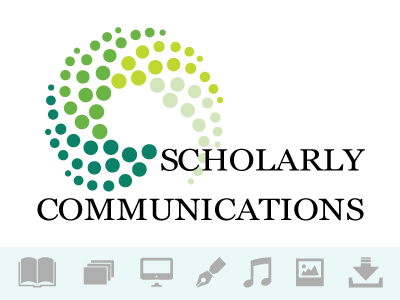
Hathi Trust, social media, and toilets
Authors Guild, Inc. v. Hathitrust revisited On Wednesday, October 30, 2013, the Second Court of Appeals heard oral arguments regarding the appeal filed by the Authors Guild claiming that the Hathi Trust (HT) collection is a security risk, requesting an injunction that would halt the HT project, and seemingly advocating that the HT could not use both section 108 (library preservation, use for personal study, interlibrary loan) and fair use (section 107) to legally justify its scanning and provision of access to digital items for research purposes and to accommodate the blind. During the palaver between the justices and the attorneys for all parties involved, the Authors Guild attorney’s main argument was that the HT collection created a large security risk for the copyright owners. In essence, the Authors Guild attorney advocated that a library could not guarantee that a hacker could not breach an information system and view the full-text or download the full-text of one of the copyrighted items in the collection. Remember one of the primary purposes of the HT collection is so that individuals can view portions of, or specific words used in an item for research purposes (similar to Google’s Ngram tool), not necessarily a complete item in the collection. Even though the Authors Guild attorney seemed to agree that using the HT collection for such a purpose provided a socially beneficial purpose and that the Authors Guild had no objection to the search features, the Authors Guild attorney incessantly argued that there was no way a library could ensure each item in the HT collection could remain secure from a security breach in perpetuity. At one point, one of the justices suggested that libraries could just purchase liability insurance for protection of such a breach. I am not sure libraries would be too keen on such an idea of purchasing an extra insurance policy for such an unlikely event. The justices on the Second Court of Appeals panel did seem to agree that HT can use both section 108 and fair use to attempt to justify this endeavor. We will discover in a few months if the appeals court agrees with the district court’s holding that supports the scanning of items for socially beneficial purposes such as providing access for the handicapped and for language pattern studies. How will social media impact copyright? Many librarians use social media in their pedagogy and in non-pedagogical collaboration with colleagues. So when forwarding a link to (or the full-text) a favorite article, or a short Facebook or Twitter post to a colleague via Twitter, Facebook…, does this constitute copyright infringement? Current copyright statutes give individual creators instant copyright protection when they create a tangible item with a modicum of originality. An article surely suffices as an item with original thought in a tangible format, and so does a one sentence tweet. Thus, whoever the creator is of such an article or tweet, he or she owns copyright of that article or tweet. Technically if either of these items is forwarded by another person via any social media outlet, this is creating a copy and possibly a derivative of the original article or tweet, usually without the permission of the original creator. What about images or orphan works floating around the social media infosphere? Every time we click “Share” and send an image to a colleague on Facebook, have we gone through the fair use checklist to see if we can re-share? Some have asserted, when original creators place items on social media platforms that they have created an implied license and therefore others may use this information. Also, in practice, when we re-tweet links, 30 or more character statements… probably we will never face a copyright infringement lawsuit, simply because no one really cares if such items are perpetually shared. That said, as libraries are now using social media to advertise, complete pedagogical endeavors, advocate its goodwill… it is best to ensure all images, links, articles… used in such endeavors are checked to ensure they meet some type of copyright exception (fair use, permission granted, or are licensed with some type of Creative Commons license). When using social media with instruction, ensure students understand what is kosher and not kosher regarding forwarding images, links to videos on YouTube, links to articles… Some possible ways to promote the dos and don’ts of social media: Provide training regarding what is and is not acceptable when using social media in concert with pedagogy Be sensitive to privacy issues when using social media Provide training regarding the possible ramifications of forwarding, posting copyrighted, privacy information Look for images licensed with Creative Commons licenses, or a similar reliable license Use public domain information Monitor student in-class posts Offer centralized sites that convey information related to social media and copyright (e.g., websites, videos, mp3s..) Walk through the fair use analysis before sending a copyrighted image… When forwarding videos, try to link to home pages, and to reliable sites (link to the British Museum, not Bob’s favorite art) Funnier side – City of Portland suing over public restrooms On the lighter side, the City of Portland is suing Romtec Inc. and alleging Romtec infringed the city’s copyright on a port-a-potty design. Portland claims it first designed and sold a port-a-potty that offers slats at the top and bottom that allows police to see how many people are inside, and an anti-graffiti mechanism at the hand-sanitization station. Portland claims Romtec stole both of these designs and is now selling their version of the port-a-potty for significantly less. It will be interesting to see how the courts “flush” away any irrelevant facts in this case. in_the_news
Posted:
11/01/2013
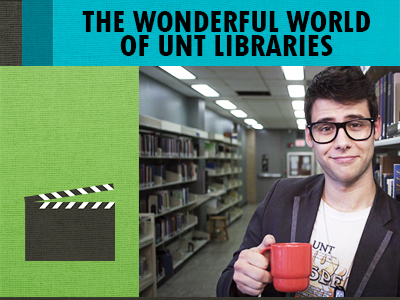
The Wonderful World of UNT Libraries
Watch our video! The UNT Libraries now have their own YouTube channel for publicly accessible videos. Our first video, The Wonderful World of UNT Libraries offers an orientation of the UNT Libraries highlighting facilities, electronic resources, and helpful tips to find what you need. The Wonderful World of UNT Libraries video was made possible by funding from the UNT Title III Strengthening Institutions Grant Office, which works with multiple departments across campus to help increase the rates of course completion, retention, and graduation of UNT students. public_services_in_the_news_about_the_libraries_did_you_know
Posted:
10/25/2013
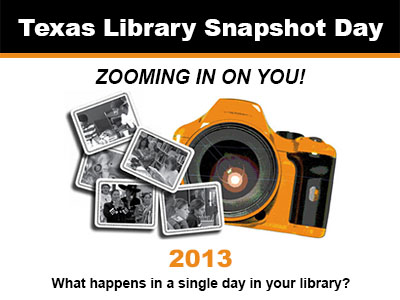
UNT Libraries Participate in Texas Library Snapshot Day
Say “Cheese!” The UNT Libraries joined thousands of libraries across the state in participating in [Texas Library Snapshot Day][]. Every day, Texas libraries reach out to millions of Texans – students, adults, job-seekers, researchers, entrepreneurs, and countless others. Snapshot Day provides a way to capture the diversity of activities and learning made possible by libraries. The results will be added to those of other libraries across Texas to demonstrate how libraries provide invaluable services to Texans. On October 17, UNT Libraries compiled statistics, customer comments and questions, photographs, and other data chronicling a typical library day. In Just One Day at the UNT Libraries: 8,222 people and students walked through the doors 1,613 books, movies, music and more were borrowed 3,348 people and students used computers 729 laptop checkouts to students 129 students taught in instruction sessions 210 reference questions were answered 365 people participated in programs 249,135 hits to the UNT Libraries’ website on 6,745 pages 8,680 people used the Libraries’ databases and e-resources 29,481 uses of unique digital library content Portal to Texas History: 17,926 Uses UNT Digital Library: 9,409 Uses Gateway to Oklahoma: 2,146 Uses 33 deliveries to faculty offices The Libraries are a magnet for community events, training, and special programs, and Oct. 17 included these programs which drew in 365 students, faculty, and community members: a training session on Web of Knowledge; a monthly meeting of the Materials Advantage Society; a library instruction session for 100 students taking English 1320; an Intensive English Language Institute orientation sponsored by UNT International; the opening reception for the exhibit Resource Center LGBT Collections: 50 Years of LGBT Collections in Dallas; an American Studies Colloquium with poet Gabriella Gutiérrez y Muhs sponsored by the English Department; and Outrageous Oral, LGBT story-telling in partnership with The Dallas Way. Above, Bruce Monroe, Buddy Mullino, and Steve Hickerson attend the opening reception for the exhibit Resource Center LGBT Collections: 50 Years of LGBT Collections in Dallas. And what kinds of questions are our students, faculty, and community asking? Here are a few examples of the 210 reference questions asked on Library Snapshot Day: Where can I find journal articles on the properties of carbon steel 1020? How can I borrow a film from another university’s collections? I am looking for Nelson’s Personal Recollections and Observations of General Nelson A. Miles particularly the chapter on Apache wars. Can you locate and copy that section for me? I am looking for examples of Poe’s poem “The Raven” in its original and subsequent printings, can you help me locate that? What are the best practices for linking in Blackboard and for giving students access to articles in Blackboard? How do I use RefWorks? What database should I use for resources about ballet? Where can I find materials about the history of prints and art markets during 17th/18th century? Can you help me locate sources about Mexican culture, religion, language, economics, and consumer behavior for a Merchandising assignment? How does one submit a book for publication in the Portal to Texas History? How do I preserve a copy of my paper in UNT Scholarly Works? Do you have the parts for a band arrangement of Three Dance Episodes from Leonard Bernstein’s “On the Town?” Can I bring in a visiting professor from Canada to see the Sanborn Room? In 2012, data for Texas Library Snapshot Day was submitted by 1,608 libraries. Last year, other academic libraries reported an average of 2,336 people and students coming in their doors and circulated 355 items on one day. The average academic library was open 17 hours a day in 2012. For more information about the resources and events UNT Libraries provide, visit www.library.unt.edu or stop by Willis, Eagle Commons, Media or Discovery Park libraries. external_relations_in_the_news_about_the_libraries_did_you_know
Posted:
10/24/2013
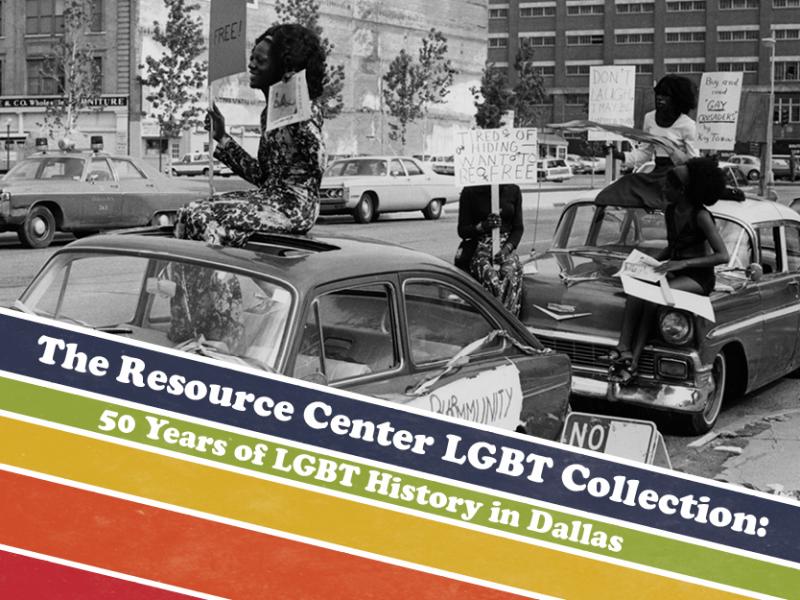
The Resource Center LGBT Collection: 50 Years of LGBT History in Dallas
When the producers of the upcoming film “Dallas Buyers Club” needed photos of Dallas’ gay community during the 1980s to accurately depict it on film, they turned to the UNT Libraries, which had 50 years of the history of lesbian, gay, bisexual and transgender social movements in its archives. Items from this collection — formerly the contents of the Phil Johnson Historic Archives and Research Library at the Resource Center in Dallas — will be on display for the first time in the exhibit, “The Resource Center LGBT Collection: 50 Years of LGBT History in Dallas,” running through Jan. 2 at Archives and Rare Books, at the Willis Library, Room 437. To learn more, see the full article in UNT’s InHouse: UNT Libraries to display Dallas LGBT archives. special_collections_in_the_news_collection_highlight
Posted:
10/17/2013
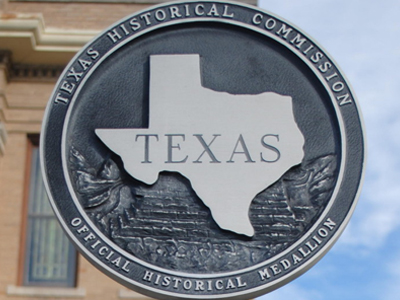
UNT Libraries Receive $25,000 TexTreasures Grant
The most historically significant buildings in Texas are commemorated with a designation from the Texas Historical Commission as a Recorded Texas Historic Landmark. This honor is awarded to historic structures deemed worthy of preservation, and is the highest honor the state bestows upon historic structures in Texas. UNT Libraries recently received a $25,000 TexTreasures Grant from the Texas State Library and Archives Commission to partner with the Texas Historical Commission to digitize and provide broad public access to 1,775 files related to buildings designated as Recorded Texas Historic Landmarks from five heritage regions in the state. Each of these historic buildings has an application and research file that document the significance and history of these seminal structures along with photographs that illustrate architectural features of the property. To learn more, see the full article in UNT’s InHouse: UNT Libraries, Texas Historical Commission digitizing info on historic landmarks. external_relations_in_the_news_honors_and_awards_grant_award
Posted:
10/14/2013
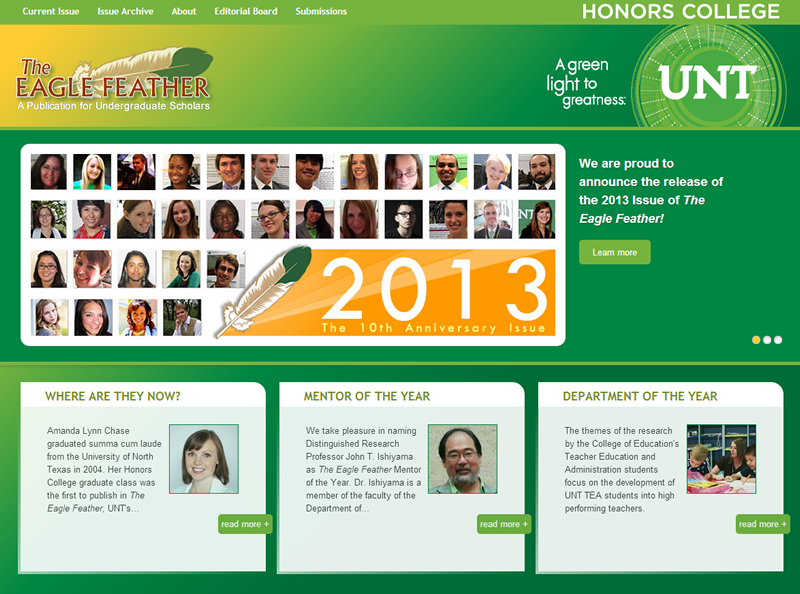
Honors College Releases the 10th Anniversary Issue of The Eagle Feather Journal
The Eagle Feather, an interdisciplinary undergraduate research journal at UNT, celebrated the 10th Anniversary Issue at a reception in the Willis Forum on October 1, 2013. The Department of the Year, Mentor of the Year, and student authors and faculty mentors were recognized for their outstanding contributions to the online, open access journal. The User Interfaces Unit recently redesigned [The Eagle Feather][] to include many new features including multiple slideshow styled banners on the home page, context driven content, an image colorbox for visual interest, an article citation designed to generate a DOI for each article, and links to the Faculty Profile @ UNT for each mentor. Three new sections were created for the journal including Mentor of the Year, Department of the Year, and Where Are They Now? highlighting former authors. To learn more, see the article in UNT’s InHouse: Honors College to celebrate student research publication. user_interfaces_in_the_news
Posted:
10/01/2013
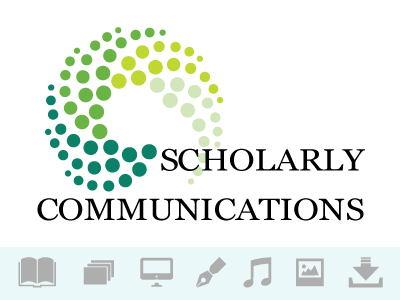
Google, FASTR and PAPS
Google Digitization Case A United States District Court in New York heard arguments from attorneys for Google and the Authors Guild regarding Google’s right to scan over 20 million books in the past decade, provide snippet looks at these books, and allow researchers to examine data and textual patterns on the Google books platform. Judge Chin’s line of questioning suggested he may support Google’s scanning effort under fair use. For example, the Authors Guild advocated by providing snippet views a researcher could theoretically submit an infinite number of keywords at different times and freely obtain the entire contents of a book. However, Judge Chin replied to this argument with a line of questioning that appeared highly skeptical that anyone would resort to such actions, especially since researchers viewing Google book snippets are directed to Amazon. At one point Judge Chin almost rhetorically queried whether the Authors Guild’s counsel thought a person would rather cumbersomely view an infinite number of snippet views of a book or just purchase a nice hard copy of that book, which one could conveniently read. Judge Chin also questioned the Authors Guild’s counsel about why he thought Google’s digitization was not transformational. To which their counsel replied that the digitization may benefit society in some regard, but that the copyright holder should get to determine whether a work is displayed or not. Such a response seems counter to the core purpose of the fair use exception. The key word in the fair use principle being “exception,” in that a purpose of fair use is to allow non-copyright holders limited uses of copyrighted works. Thus, none of the four fair use factors give credence to allowing a copyright holder to determine whether his or her works may be used by a non-copyright holder. Instead, fair use is designed to grant permission for uses (especially transformational uses, which the Google digitization project appears to be) of copyrighted works by non-copyright holders. A more humorous moment in the arguments came when the Authors Guild’s counsel suggested that the United States Congress should be allowed to decide this issue, and not the federal courts. To which Judge Chin deftly replied “does anything get done in Congress these days?” Further, it is not Congress’s job to issue judicial opinions, but its job is to legislate when it gets around to it. In sum, it is never a good idea to predict the outcome of a trial based on the line of questioning from a judge. However, from the information garnered during this judicial inquiry, Google has to be confident as it awaits a decision from Judge Chin. Here is a link to the trial transcript. FASTR and PAPS On September 10, 2013 Congress completed a briefing examining the proposed FASTR legislation that promotes open access to taxpayer funded research. This bill was proposed in the United States Senate and in the House . Both of these companion bills were referred to their chamber committees in February of 2013. On Wednesday, September 25, 2013, the University of North Texas became a signatory to the SPARC/COAPI open letter to the higher education community in support of the FASTR legislation Also, on Monday, September 23, 2013 another federal bill was introduced in the U. S. House that proposes legislation that would permit open access to taxpayer funded research. This bill is titled the “Public Access to Public Science Act.” The proposed FASTR and PAPS bills vary to some degree. For example: PAPS is relevant to four agencies, whereas FASTR is pertinent to eleven agencies; the way the proposed legislation is written it is uncertain whether PAPS applies to a final publication, in contrast, FASTR applies to an “author’s final manuscript;” PAPS mandates open access metadata, FASTR does not; PAPS offers a default twelve month embargo, FASTR requires OA as soon as practicable but no later than six months; interestingly both mandate green, not gold, open access. For a full comparison of both bills please see: http://cyber.law.harvard.edu/hoap/Notes_on_the_Public_Access_to_Public_Science_Act#Comparing_PAPS_and_FASTR in_the_news_did_you_know
Posted:
09/26/2013
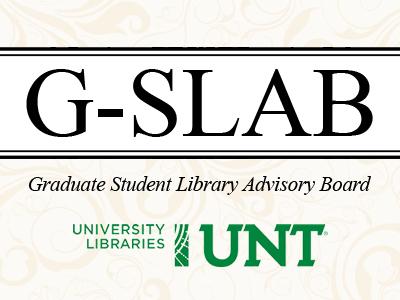
Student Library Advisory Board
The UNT Libraries strongly supports the research initiatives of our students with innovative services and high quality resources and collections. The Undergraduate and Graduate Student Library Advisory Boards provide a forum for discussion and suggestions regarding all aspects of the Libraries related to research. public_services_in_the_news
Posted:
09/18/2013
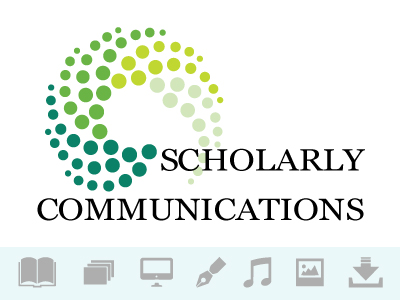
Linking and COAPI's Response to Expensive Texts
A New York federal district court holds linking is not direct infringement, but could be indirect infringement I am frequently asked, is it acceptable to link to an item on the Web when it is difficult to discern with certainty whether the item is copyright compliant? My response in general is that one should first do a due diligence investigation and determine how reliable the site is. If the site contains many PDFs of articles but offers no indication as to whether the site has received permission to post these articles, one should be wary of linking to such a site. Further, in general, if one is looking to link to images on the Web, a safe route is linking to the Getty or the British Museum, rather than linking to a site called Mike’s favorite art gallery. So, common sense lends some guidance. That said, recently a federal district court in New York ruled that “without more, merely providing a link to copyrighted content is not direct infringement of the copyright in that content.” But the court did caution that although linking to images, articles and other content is not direct infringement, uploading such content to a server to which the link pointed could be an infringement. Also, linking to said content could constitute indirect infringement. So, for our purposes at the academy, it is a best practice to investigate a site before linking to content. Chose reliable and valid sites (e.g., the Library of Congress, a university website, an open access newspaper…), and do not link to sites that look like they negligently post copyrighted materials. It is also wise to be consistent in one’s actions, perhaps being repetitive, but always link to valid websites. For the academy, if one performs his or her due diligence and genuinely believes a website is being cognizant of others’ intellectuality property rights, then one should feel confident in linking to such a site. COAPI’s response to expensive textbooks COAPI has a Fox Business interview from August 29, 2013 linked on its site in which the interviewee from COAPI discusses potential open access alternatives for student textbooks compared to modern expensive texts. COAPI proposes grant and other non-profit funded open access e-textbooks written by professors and other experts that would be offered to students at no cost. In the interview, the question is posed “how is such a project sustainable if a grant runs out, or if a not-for-profit stops funding?” A deftly and logical response is given which depicts innovators continuing to fund such projects by providing tutoring or other academic assistance to students using these textbooks, and a portion of the fee for those services would be applied to sustaining the open access e-texts. Many other innovative business models would surface if such open access material is provided to students. Such new business models could benefit many stakeholders in the academic universe. For example, a freshman at the University of Florida State who participated in this interview stated she spent $200-300 on her print based books this semester. Offering open access e-texts to students from which they could print any amount of the content; annotate and collaborate online with other students; and interact with the e-texts via social media such as Twitter, Facebook, wikis and other sites; would provide a more affordable and collaborative learning tool that would create a rich-text learning environment for students. Creative innovators, such as the tutors mentioned above could create and charge the university/and or students realistic fees for perpetual tools that would assist students in leaning. Authors of these texts may even be able to generate better royalties, and thus actually gain more income than they would from the traditional publishing model. Or, authors may wish to simply have their content open for students to use for free. Regardless, there are a number of business models that would flourish and benefit many people if these open access e-texts are implemented. Rice University is currently experimenting with such an innovative model via its openstax College. I suspect other universities will experiment with these models as well. in_the_news
Posted:
09/13/2013

Wireless Printing is Now Available
To enable printing from your laptop, go to printing.unt.edu and log in using your EUID and password. Choose Web Print from the left sidebar menu. Click Submit a Job to upload a document for printing. Select a printer form the list. Choose the number of copies you want to print. Upload your document. To purchase credit online, choose Add Credit from the left sidebar menu. Select the amount to add to your account from the drop down menu. Click Add Value. The system will transfer you to a secure payment screen. Complete the form. Credit will be available when payment is approved. Please note: Your browser window will return you to PaperCut after the transaction is complete. Closing the window may interfere with the transaction. facilities_systems_in_the_news_did_you_know_new_service
Posted:
08/30/2013
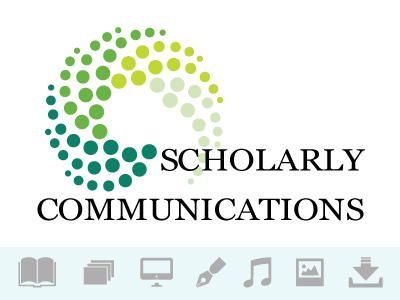
The Getty.edu and Other Digital Venues on Which to Locate Copyright Friendly Images
Last week the Getty Museum announced it was removing all restrictions for use of most of the images that the Getty.edu houses. These copyright friendly images are either in the public domain, or the Getty is releasing all rights that they own to these images. In essence, there are now roughly 4,600 images located in the Getty Open Content Program that are freely available for others to use for classroom instruction, scholarship, creative purposes, and any other commercial or non-commercial uses. Many of these images consist of paintings, drawings, manuscripts, photographs, antiquities, and sculptures. Therefore, educators have another resource pool from which to locate and employ images for their academic and scholarly purposes. Of course, when one needs to locate images for use at the academy, Creative Commons also offers a search function that assists in locating images licensed with Creative Commons licenses. This search tool is located at: http://search.creativecommons.org/ From this webpage, one may search for images from various sites such as Flickr, Fotopedia, Google Images, Open Clip Art Library, and Pixabay. Many images found on these various sites are licensed by one of the six Creative Commons licenses. Therefore, unlike the images located on the Getty, which have no restrictions on their use, the images licensed with Creative Commons licenses may have some restrictions. Thus, one should review the type of CC license applied to an image to ensure proper use of said image (e.g., attribution to a creator, restrictions on commercial use…). From the Creative Commons search site: http://search.creativecommons.org/, one may also search for media, websites, music, and videos that are licensed with Creative Commons licenses. Other sites that offer images with no or limited copyright restrictions include: FreeDigital Photos.net : http://www.freedigitalphotos.net/ Most images on this site are licensed to allow the free implementation of any personal, educational or charitable purpose. However, if one wishes to use the images on this site for commercial purposes, then one may have to purchase a license to do so. The Morgue Files: This site offers images licensed with Morgue Files licenses, which have similar restrictions to the Creative Commons licenses. Photo Rogue is an interesting concept, where on this website, one may make a request for a specific type of photo. Then, theoretically, a volunteer photographer attempts to create the requested photograph, and then posts it to this site for the original requester. Obviously, some copyright restrictions are apparent by using a photograph taken by another person, if the requested photograph is ever taken. The individual taking the photograph would own all copyrights, unless they transfer an interest to another person, in writing. in_the_news
Posted:
08/21/2013
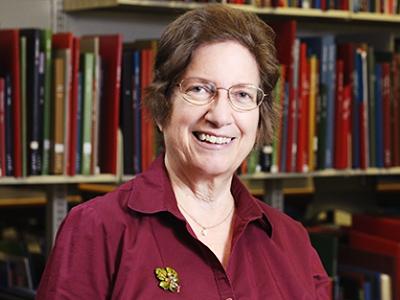
Keep Calm and Ask Donna
Almost daily, someone will come up to Music Reference Librarian Donna Arnold and start a sentence with, “I’m sorry to bother you…” But, really, it’s no bother, Arnold will insist. Answering questions and helping with music library research are the main parts of her job. It’s a job that she not only cherishes, but that others in the UNT Music Library appreciate. In fact, Associate Head Music Librarian Andrew Justice came up with an Internet meme that reads: “Keep Calm and Ask Donna”. Arnold receives a variety of inquiries daily – one recently from a scholar in Austria is a typical example of how students, researchers and community members across the nation and abroad turn to the Music Library for help. “I’m supposed to be able to answer any music questions – and we get questions from all over the world,” Arnold said, with a smile. “I find that having a musically eclectic background helps.” Arnold came to UNT in 1972 to get a doctorate in musicology, which gave her extensive training in classical music research. Her personal interest in genres such as country, folk and jazz has also helped very much in this job, she said. Another big help was that when she started working as a student assistant in the Music Library, former Head Music Librarian Morris Martin had been working there for three years already and she was able to learn from him. “Whenever I was stumped, Morris always knew the answers. He is on a short list of the very best music librarians in the United States,” said Arnold. To learn more, see the full article in UNT’s InHouse: Keep calm and ask Donna Arnold. external_relations_in_the_news
Posted:
08/12/2013

Human Library - Looking Beyond a Book's Cover
Skylar Conover, a rehabilitation counseling graduate student who uses a wheelchair, considers herself an open book. Ask her a question about her disability — she was diagnosed in 2005 with Facioscapulohumeral Muscular Dystrophy — and she will be eager to answer it. And that’s why she plans to participate in the Human Library again. The Human Library, co-sponsored by UNT Libraries and the UNT Multicultural Center, will take place from 3 to 6 p.m. Sept. 17-18 in the Willis Library, Forum. Volunteers are currently being sought for this year’s event. To learn more, see the full article in UNT’s InHouse: Looking beyond a book’s cover. external_relations_in_the_news
Posted:
07/31/2013
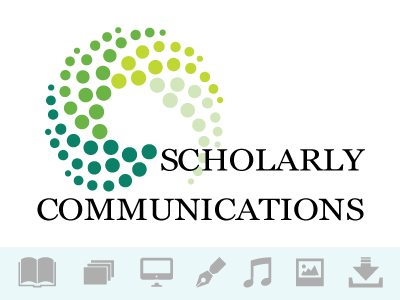
When is an item damaged, deteriorating, and/or obsolete?
I was recently reviewing our Media Library’s preservation policy and was able to reminisce about some concepts currently discussed in section 108 of the United States Copyright Act. The first portion of section 108(c) allows libraries to make up to three copies of published works or phonorecords for the purposes of replacement if such work is damaged, deteriorating, lost, or stolen. Based on subsequent confusion of this phraseology, the section 108 Study Group recommended amending this statute to allow for the copying of “fragile” materials as well. The Study Group wanted to add the term “fragile” because it is not always apparent when a work is legally considered damaged or deteriorating. Further, by the time a work is damaged or deteriorating, it may be too late to copy such a material without completely damaging it due to its fragile state. The Study Group also recommended amending section 108 to allow for the copying of materials before detectable deterioration is apparent. Although, currently, Congress has not amended this statute in any way, so these are all simply recommendations. Section 108 also does not offer a detailed explanation of what is “deteriorating or damaged.” However, many libraries including the New York University Libraries adhere to the following principles: to determine what is damaged, or deteriorating, analyze whether an audio-visual item displays visible and/or quantifiable deterioration of the tape or video signal that impairs viewing. For example, if an audio-visual item exhibits noticeable visual dropout, noticeable audio dropout, noticeable repeated disruptions in the video RF signal, color loss or alteration, or other perceivable degradation or distortion of the content; the item may be considered damaged or deteriorating. Many libraries have adopted similar guidelines to help adhere to current 108(c) language. The later phraseology of section 108 states that an item may also be copied by a library if the existing format in which the work is stored has become obsolete. However, what makes an existing format “obsolete?” A Digital Millennium Copyright Act Report notes that obsolete items are no longer manufactured or not reasonably available in the commercial marketplace. So, if an item cannot be located in a second-hand store, in general, it is not “reasonably available,” and therefore considered obsolete. Some items that may be considered obsolete consist of: Betamax videotape, S-VHS, LaserDisc, MiniDisc, 8mm videotape… Some items considered currently available consist of VHS, compact audiocassette, Blu-Ray, DVD, LP… For a more exhaustive list of items considered “reasonable available” and not available see the New York University Libraries Video At Risk: Strategies for Preserving Commercial Video Collections in Libraries report. Currently, it can be tricky to determine what is damaged, deteriorating, or obsolete. However, crafting a policy that guides a library in dealing with these issues, and consistently adhering to said policy can provide assurance and legal protection for the present and future. in_the_news
Posted:
07/26/2013
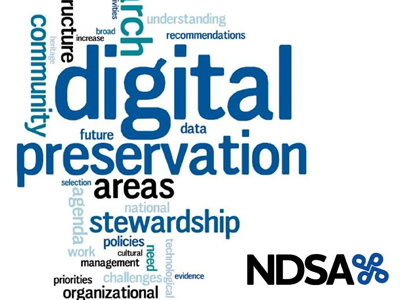
National Digital Stewardship Alliance Releases Inaugural National Agenda for Digital Stewardship
The National Digital Stewardship Alliance, a voluntary membership organization of leading government, academic, and private sector organizations with digital stewardship responsibilities, has announced the inaugural release of the National Agenda for Digital Stewardship. Digital stewardship is the series of managed activities, policies, strategies and actions that ensure that digital content of vital importance to the nation is acquired, managed, organized, preserved and accessible for as long as necessary. The National Agenda will annually highlight emerging technological trends, identify gaps in digital stewardship capacity and provide funders and decision-makers with insight into the work needed to ensure that today’s valuable digital content remains accessible and comprehensible in the future, supporting a thriving economy, a robust democracy, and a rich cultural heritage. The 2014 Agenda integrates the perspective of dozens of experts and hundreds of institutions, convened through the Library of Congress. It outlines the challenges and opportunities related to digital preservation activities in four broad areas: Organizational Roles, Policies, and Practices; Digital Content Areas; Infrastructure Development; and Research Priorities. The National Agenda identifies a number of areas targeted for key investment, including: Digital Stewardship Training and Staffing Applied Research on Information Valuation, Curation Cost and effective auditing Experiments in Interoperability and Portability of Storage Architectures Integration of Digital Forensics Tools into Stewardship Workflows Development of the evidence base through surveys, experiments and testbeds Over the coming year the NDSA will work to promote the Agenda and explore educational and collaborative opportunities with all interested parties. Founded in 2010, the National Digital Stewardship Alliance (NDSA) is a consortium of over 145 member institutions committed to the long-term preservation and stewardship of digital information. NDSA member institutions come from all sectors, and include universities, consortia, professional societies, commercial business, professional associations, and government agencies at the federal, state, and local level. UNT is a founding member of the NDSA. Martin Halbert, Dean of Libraries, serves on the NDSA Technology Working Group and Cathy Hartman, Associate Dean of Libraries, serves on the NDSA Content Working Group. external_relations_in_the_news_publication
Posted:
07/23/2013
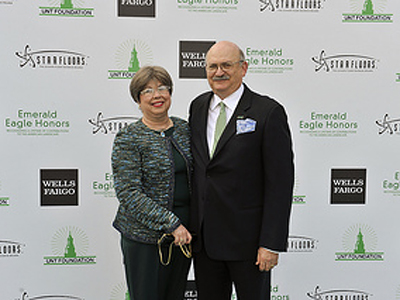
Bob and Bette Sherman Establish the Sherman/Barsanti Inspiration Awards
Neither Bob nor Bette Sherman attended the University of North Texas, but their ties here run deep. Bob Sherman says sometimes he’s overwhelmed by the positive memories he has of UNT from his childhood. Sherman’s father, Robert, spent more than 30 years as a UNT biology professor and administrator. The Shermans gave $350,000 to establish the Sherman/Barsanti Inspiration Awards, which award cash prizes to students whose work demonstrates originality, innovative thinking, unique creative instincts and the potential to benefit society. Part of UNT’s Innovation Greenhouse, any original project, invention, composition or artwork is eligible to win the award. The awards are named to honor the Shermans and Bette Sherman’s father, the late Maj. Gen. Olinto Mark Barsanti, whose historic military artifacts are part of the UNT Libraries archive. To learn more, see the full article: Bob Sherman: Inspiration Awards designed to reward unbridled creativity. in_the_news_honors_and_awards
Posted:
07/11/2013
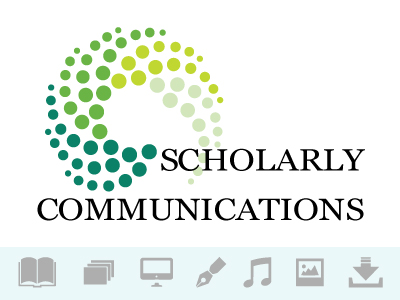
Authors Denied Class Status in Google Digital Books Case, Lower Court Must First Decide Fair Use Issue
On Monday, July 1, the United States Court of Appeals for the Second Circuit held that the authors who are a party to this suit may not be allowed to file a class action lawsuit against Google. The intermediate court reasoned that the lower court first needs to decide whether Google’s scanning of print books for the purposes of research, preview, and indexing is a fair use. After the fair use issue is decided, then if necessary, a decision may be revisited concerning class certification of the authors. By not allowing the authors to be certified as a class, Google may potentially face less monetary liability, if any liability at all. However, the intermediate circuit court has directed the lower court to first determine whether Google’s scanning of the books and its subsequent use of the books is fair use. How does this benefit libraries? It depends. One immediate benefit is the lower court now must determine whether Google’s scanning of these books for research, indexing, and previewing purposes is fair use. Therefore, if the court deems such use a fair use, libraries in the north Texas region can point to another persuasive case supporting fair use that involves scanning the full text of documents; and allowing access to snippets or portions of these documents for the purposes of access, research, indexing, previewing, and possibly other academic endeavors. I state that this is a persuasive case because whether Google’s scanning is fair use will be determined by the U.S. District Court for the Southern District of New York. A ruling in this case is persuasive and not mandatory for the U.S. District Courts in Texas and for the U.S. Court of Appeals for the Fifth Circuit, whose case decisions are mandatory for the University of North Texas. The U.S. Supreme Court would have to decide whether Google’s use was fair use for such a legal holding to be mandatory for the University of North Texas, and for other libraries in the north Texas region. Further, the Supreme Court may very well be petitioned to make such a determination regarding this case based on the monetary damages the plaintiffs expect to see in this case. So, libraries will have to first wait and see how the District Court for the Southern District of New York holds in this case, fair use, or not? Then, it is highly possible an appeal will result regardless of how the lower court holds, and this case will proceed back in the United States Court of Appeals for the Second Circuit (such appeal will probably again address the class certification question). Libraries should hope for a lower court ruling stating that Google’s scanning and partial display of these materials is fair use, even if such a ruling is only persuasive to libraries in the north Texas geographic area. Such a ruling invites libraries to partake in similar practices that result in better services for patrons wanting to research, index, and view materials that are rare, common, out of print, or in-print. in_the_news
Posted:
07/02/2013
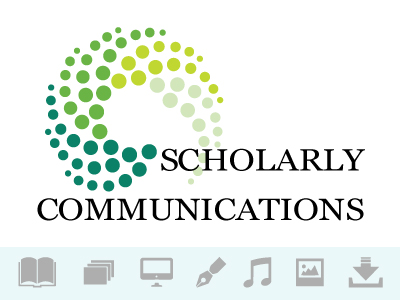
SHARE Proposal Would Create Access to and Allocation of Federally Funded Research
On February 22, 2013, President Obama issued a directive for each federal agency with over $100 million in annual conduct of research and development expenditures to develop a plan to support increased public access to the results of research funded by the federal government. To assist in this process, a consortium of library associations and universities including the Association of American Universities, the Association of Public and Land-Grant Universities, and the Association of Research Libraries recently proposed a mechanism called Shared Access Research Ecosystem (SHARE). This proposed mechanism leverages some of the existing infrastructures some universities have already adopted, built, and implemented; such as reliable scanners and green deposit digital institutional repositories. This proposal also encourages other universities to get involved in the consortium that want to create institutional repositories but that do not have the time or funding to build such infrastructures. In essence, these time and funding strapped entities can partner with universities that have a ready working infrastructure and that can support the digitization and archiving of scholarly works. Under the SHARE method, each participating entity that receives federal research money designates a repository (whether their own repository or a partner entity’s repository) to receive and store items available for public access and long-term preservation. Ultimately, the proposed federated SHARE system could connect universities and other research entities across the nation by allowing the sharing of and access to research that is federally funded. A consortium of publishers have also proposed an apparatus for helping meet this presidential directive called the “Clearinghouse for the Open Research of the United States,” or CHORUS. However, publishers may have differing opinions as to what documents and how much of a deposited item should be made available to the public. Time will tell if either proposal is attractive to the White House Office of Science and Technology Policy, which issued the directive. in_the_news
Posted:
06/13/2013
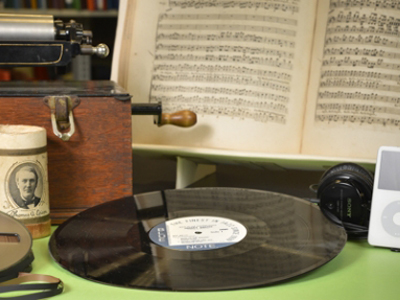
Music Library Remodels, Expands
Recent changes at Willis Library have helped the Music Library better utilize space, cater to patrons’ needs and continue to offer support to faculty, staff, students and community members and scholars worldwide who use their collections and services. Those changes are evident as soon as patrons step off the elevator on the fourth floor and see the new service desk. By consolidating items from the library’s general collection, space was created for Music Technical Services to process new acquisitions, donations and cataloging, said Andrew Justice, above, audio and digital services librarian. The Music Library also gained space off-site with a state-of-the-art remote storage facility and new, movable shelving. Most items with the highest use in the library’s nearly 100 special collections will be stored there, as well as non-digital sound recordings, the majority of which have not yet been cataloged. To learn more, see the full article in UNT’s InHouse: Music Library remodels, expands. music_about_the_libraries
Posted:
06/04/2013
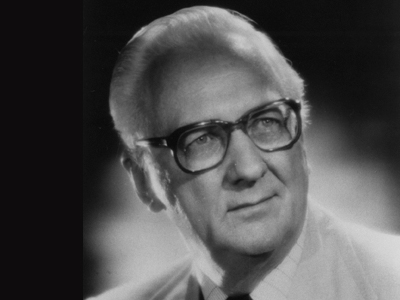
Music Library Marks Gene Hall Centennial
If you are a fan, alumnus, or alumna of the UNT Jazz Studies program, you owe a great debt of gratitude to Gene Hall, who laid the theoretical groundwork for and led the first degree program in jazz studies. If you are a fan, alumnus, or alumna of the UNT Jazz Studies program, you owe a great debt of gratitude to Gene Hall, who laid the theoretical groundwork for and led the first degree program in jazz studies, though it was called “Dance Band” at the time. Born in Whitewright, Texas, on June 12, 1913, Morris Eugene Hall started his musical studies as a preteen on a C-melody saxophone, which his father later traded for an alto saxophone as Hall became more involved in local ensembles. The difficulty of finding work during the Great Depression made continuing as a musician an economic necessity; Hall’s band, The Joy Makers, found their first regular engagement near Sherman, TX, as he continued to do farm work and other odd jobs during the day. After a stint with the Civilian Conservation Corps, Hall joined a band based in Denison, TX at the prospect of making $10 a week performing in Missouri (though the actual amount was less). Hall returned to Texas in 1933, and in early 1934, he and members of his prior band sought work in Denton, expecting good prospects for a dance band in a college town. He explained in 1991: “We had a house over there on Normal Street … Somehow or other I managed to save $18, and Bill Collins and I decided to go to school over here. Maybe we could do something. I paid my $18, but tuition was $36, so I painted the inside of the president’s house for the other $18 to finish off my tuition.” A lack of funds forced Hall to drop out after a few months, and he joined a band in the Austin, TX area. That band, the Grand North American Orchestra, undertook a European tour. An initial setback in Spain turned into a three-month period of work, but the outbreak of wars and civil unrest thwarted the band’s plan to continue on to Italy and Egypt. The band returned in 1935, and Hall hitchhiked home to Whitewright from New Orleans, working in a grocery store until the middle of 1936. Bill Collins then invited Hall to join Floyd Graham’s band at North Texas, which made as much in a Saturday gig as Hall did in a week at the store. He moved his family to Denton, though they still struggled to make ends meet as he studied at North Texas, and played and arranged music for Graham’s band. Hall finished a Bachelor’s degree with a dual major in music and education in 1941. Expecting to be drafted at any time, he began work on his master’s degree at North Texas. He explained: “… I come back to North Texas, and [Wilfred] Bain gives me a graduate assistantship. I have three chores. One of them seems ridiculous now. One of the things I had to do was patrol the practice room area at certain times to be sure no one was practicing or playing jazz or popular music.” When Hall approached Bain to propose a thesis topic, Bain told him he already had one picked out for him: to write a method book for teaching jazz on the college level. Hall finished his thesis in 1944, while working variously as a band director, a touring musician, and a shoe salesman. In 1944, he replaced Don Gillis as staff arranger at the radio station WBAP. In 1947, just as he was about to move to New York to begin doctoral studies and work with Don Gillis, Bain’s successor as dean of the School of Music, Walter Hodgson, offered Hall a job at North Texas. Hall obtained approval from the curriculum committee for a “dance band” program “because jazz was such a negative term in those days … It wasn’t until the 1960s that Leon [Breeden] was able to get it changed to ‘jazz’.” The decision was controversial, and Hall did not sell his house in Fort Worth and move to Denton until Dean Hodgson told an assembly of the music students and faculty that his decision was final. Hall recalled: ”[Hodgson] got up and made a speech about the responsibilities of a state institution to the people who paid the taxes in returning to the community people qualified to deal with various areas. In our case, music.” Hall quoted Hodgson: “We have a responsibility, and we now have the means to satisfy the responsibility, and I want you people to stay out of my office. The jazz program is here to stay.” The program continued to face considerable and often intensely personal opposition from the outside, as one self-styled expert wrote to Hall: “It seemed that you were very proud of the fact that yours was the only music Dept. in the U.S. teaching Jazz music (or can it be called music?)Thank the Lord that yours is the only place. I should think that the efforts of the School could be put to a much more constructive use . I also wonder if the tax payers are paying the bill for this kind of drivel or if supported by individuals what type of persons they can be to finance such a zaney program.” But Hall persevered at North Texas, and also received his doctorate in education from New York University in 1954. He went on to found a similar program at Michigan State University in 1959, as the North Texas program was quickly gaining a national reputation. He went on to chair the music department at the College of the Desert in California, and later served on the faculty of Stephen F. Austin State University in Nacogdoches, TX. He was also the first president of the National Association of Jazz Educators, and was awarded their Hall of Fame trophy in 1981. Hall died in Denton on March 4, 1993, leaving behind an incalculable legacy in jazz and in music education. The UNT Music Library has had the privilege of organizing and preserving a considerable portion of his papers and memorabilia in the Gene Hall Collection. Sources: Michael Cogswell and Ronald E. Marcello, “University of North Texas Oral History Collection Number 840: Interview with Gene Hall,” February 1991. The Gene Hall Collection, University of North Texas Music Library. Brad Madson and Marjorie Lynn Hall. “Hall, Gene.” The New Grove Dictionary of Jazz, 2nd ed.. Grove Music Online. Oxford Music Online. Oxford University Press, accessed June 10, 2013, http://www.oxfordmusiconline.com/subscriber/article/grove/music/J584200. Dave Oliphant, “HALL, MORRIS EUGENE [GENE],” Handbook of Texas Online (http://www.tshaonline.org/handbook/online/articles/fhafz), accessed May 31, 2013. Published by the Texas State Historical Association. music_in_the_news
Posted:
05/29/2013
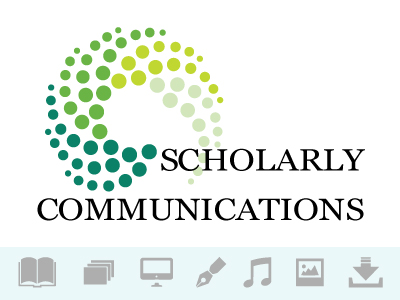
Open access publishing and the University of North Texas Open Access symposium titled “Futures of Academic Publishing: UNT's 4th Symposium on Open Access”
In light of the University of North Texas Open Access symposium titled “Futures of Academic Publishing: UNT’s 4th Symposium on Open Access,” which will occur May 30-31st, it is apropos to mention a couple of recent developments in open access publishing and dissemination models. EThOS, for example, is an open access electronic theses online service operated by the British Library. This service recently announced it will retain its open access model and be operated by the British Library, but also it will no longer charge any United Kingdom University for subscriptions to have its theses included. This is an economic boon for academic United Kingdom libraries, and it would be nice if such a free open access model could be developed in the United States. Also, various gold models of open access journals continue to emerge. For example, some open access journals are charging thousands of dollars to publish one article. However, if an institution subscribes to a certain amount of content published by an open access publisher, often that publisher will allot a specific number of vouchers to that subscribing institution. Academics at the subscribing institution may then redeem one of these vouchers for a waiver (or receive a reduced fee) of the publishing fee to publish in the open access journal. Whereas, PeerJ is now experimenting with a lifetime-membership model that permits one to pay once and publish in the journal for life. Their basic individual membership begins at $99 and entitles an author to publish one article per year in PeerJ (if the fee is paid prior to a manuscript being accepted). PeerJ also offers an Enhanced membership ($199 one-time fee), an Investigator membership ($299 one-time fee), and institutional agreements that can be negotiated with PeerJ. So, next week, it will be interesting to hear the opinions, views, and advocacy of various members in the academic and publishing professions regarding green open access models, gold open access models, and where each individual envisions open access publishing five years from now regarding peer reviewed articles, theses and dissertations, less scrutinized works such as courseware, and any other type of works. in_the_news
Posted:
05/22/2013
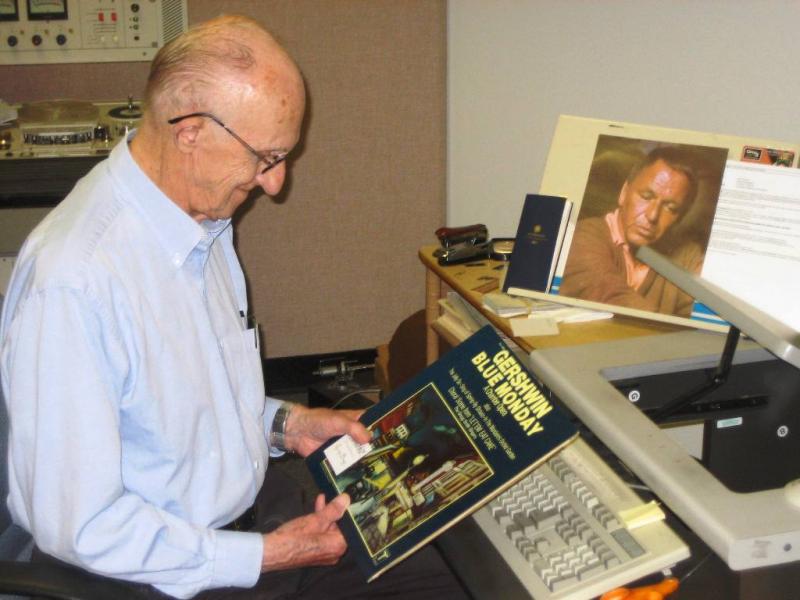
UNT Music Library Honors the Legacy of Bob Rogers
Many in the UNT community and around Denton knew of Bob Rogers as a professor and pianist, and for his cheerfulness and kind disposition. In the Music Library, we knew Bob for all of the above, but also as a dedicated volunteer who, along with his wife, Daisy, worked countless hours assisting in absorbing the steady stream of new materials that come to the Music Library into the collection and the public catalog. Jazz and popular musicians owe a particular debt to Bob for his entry of the each song title in many of the library’s “fake books” into the online catalog, and for his cataloging of tens of thousands of pieces of sheet music in our WFAA, WBAP, and popular song collections. Students, faculty, and visitors to the Music Library will benefit from Bob’s excellent work here for years to come. We are honored to have been one of the many corners of the world which Bob left better than he found them. music_in_the_news
Posted:
05/16/2013
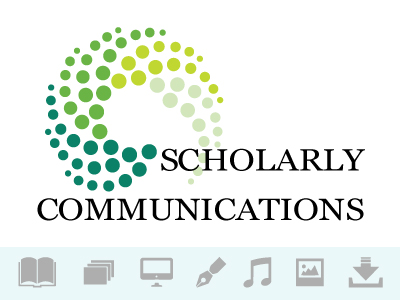
A Case Study for Consensus Building: The Copyright Principles Project
Today, the Committee on the Judiciary is hearing information regarding section 108 and future copyright law. The Section 108 Study Group previously made recommendations to amend section 108 of the United States Copyright Act, which addresses how libraries may preserve and replace items in its collection, distribute items to patrons, and disseminate items via interlibrary loan. Laura Gasaway, who was a member of the Section 108 Study Group and who is a Professor of Law at the University of North Carolina School of Law, is participating in this committee hearing today. She makes the following recommendations in her Statement to the Committee on the Judiciary. Professor Gasaway recommends amending the language in section 108 to address the orphan works issue and to deal more flexibly with digital items. Further, and more specifically, she suggests adding museums to section 108, not restricting the number of preservation and replacement digital copies to three, and allowing a preserved or replaced item to be used outside the premises of an institution. Professor Gasaway also suggests adding preservation subsections that would allow for up-front preservation of publicly available digital works, and to permit the preservation of publicly available websites not restricted by access controls. If Congress is not willing to amend section 108, other suggestions given are to repeal section 108 and rely solely on fair use, or implement a technology neutral statute that would allow users of libraries and archives to use copyrighted works in a non-commercial guise. Such suggestions appear to be based on the Copyright Principles Project. One can only surmise what Congress will ultimately do, if anything at all. However, at least some library advocates are giving testimony in these hearings before the Committee on the Judiciary today. in_the_news
Posted:
05/16/2013
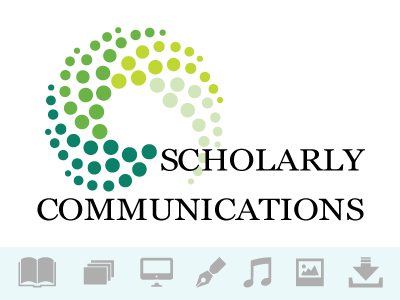
The UCLA Streaming Case
A federal district court recently dismissed a copyright infringement case against UCLA. This case was styled Association for Information Media and Equipment v. Regents of the University of California. The suit alleged that UCLA was infringing copyright and violating the anti-circumvention provisions of the DMCA by ripping DVDs and then streaming their content to students in-class. Access to the streamed content was password protected. However, although this dismissal was a positive result for UCLA, this case did not really resolve the issue of academic streaming. Instead, the case was decided on procedural grounds. The judge dismissed the case due to UCLA’s sovereign immunity as a state school. The authority to dismiss such a case due to sovereign immunity stems from the Eleventh Amendment of the United States Constitution, which has been construed to convey that state institutions and employees of such institutions are immune to suit in federal court. In other words, the federal government cannot haul a state into court. Some recent precedent does exist for this court ruling. For example, in Florida Prepaid Postsecondary Education Expense Board v. Savings Bank, 527 U.S. 627 (1999), the Court held that Congress did not have the necessary authority under the Patent Clause, the Commerce Clause, or the Fourteenth Amendment to abolish state sovereign immunity in the Patent Act. The Court was examining this issue because language in the Patent Act suggested that states, their officers, and their employees are not immune to suit under the said Act. Section 511 of the United States Copyright Act also specifically conveys that states, their officers, and their employees are not immune to suit under Section 511. However, in the case at issue involving UCLA, the district court judge followed this line of reasoning that conveyed state institutions had some sovereign immunity protection, and thus dismissed the case on lack of standing grounds. It is important to remember this was a federal district court case. On appeal, this case could be overturned by a federal court of appeals, or by the United States Supreme Court. It is also important for the broader University of North Texas community to be cognizant that this was a federal district court decision in the Ninth Circuit. Texas is located in the Fifth Circuit, thus this case’s findings are only persuasive for any federal court in Texas, and not binding. It is also relevant to consider that in the 1990s the Rehnquist Court once ruled that states can be sued by states for trademark and patent offenses. Therefore, the pendulum can and does swing, and libraries should be careful in solely relying upon sovereign immunity. That said, this case represents another judicial victory for libraries. After all, UCLA is, at least for now, being permitted to digitize materials and stream them to students for educational purposes. Also, it is interesting to ponder section 110(1), and whether it applies to such an action of streaming owned content to students. Section 110(1) allows for the performance or display of a work by instructors or pupils in the course of face-to-face teaching activities of a nonprofit educational institution. Thus, if the libraries own these VHS tapes and DVDs they are streaming, such streaming to face-to-face classes may be kosher under section 110(1), as long as a licensing agreement has not been signed by the libraries that prevents such streaming. A library may also be able to fit this streaming practice into fair use. After all, if they are streaming the films for an educational purpose, and perhaps the films are of an educational nature to begin with, and such use probably does not affect a potential market. Thus, fair use is a possible means of streaming such content as well. The point is, library streaming of content for educational use is a potentially permissible tool within the legal guise of copyright law, and for now, UCLA is demonstrating how such content may be effectively disseminated to students. in_the_news
Posted:
05/09/2013

May one stream a Netflix Video for in-class use?
I have been asked more than once by a faculty member, may I stream Netflix videos to my classroom? Most Netflix videos, unless they are older films in the Public Domain, are protected by copyright. However, there are statutory exceptions that allow educators to show all or portions of films in an educational classroom. Title 17, Section 110(1) of the United States Copyright Act, for example, states educators may show a “performance… of a work… in the course of face-to-face teaching activities of a nonprofit educational institution, in a classroom or similar place devoted to instruction, unless, in the case of a motion picture or other audiovisual work, the performance, or the display of individual images, is given by means of a copy that was not lawfully made under this title, and that the person responsible for the performance knew or had reason to believe was not lawfully made. In other words, this section permits an educator to show a film, or a portion of a film, in a face-to-face classroom or a similar location, unless the copy of the film was unlawfully made. Therefore, if an educator at a university or at a K-12 entity wants to show a film, or a portion of a film, for educational purposes in a face-to-face classroom, he or she is entitled to do so. Section 110(1) also mandates the film shown must be lawfully made. As far as I know, Netflix videos are lawfully made. Thus, at first glance, section 110(1) appears to permit streaming Netflix videos to a classroom. But, when one signs a license agreement, he or she often gives away certain freedoms, such as copyright exceptions. The Netflix user agreement overtly conveys “the Software is only for your own personal, non-commercial use and not for use in the operation of a business or service bureau, for profit or for the benefit or any other person or entity.” Most copyright attorneys comprehend the phrase “for your own personal… use” as giving away your statutory exceptions to use section 110(1) and even section 107 (fair use). Thus, when one signs a licensing agreement with Netflix, he or she in essence is agreeing to only stream videos in the privacy of his or her own home. Educational entities willingly give away such freedoms often when they sign licensing agreements with various vendors. What if you invite your class over to your house and stream a movie for educational purposes? After all, the statute does state “in a classroom or similar place devoted to instruction.” May one’s domicile be considered a similar place devoted to instruction. Probably not, and it is probably not convenient to circumvent a licensing mandate by inviting students to one’s private domicile, although that could be up for debate. Yet, this exemplifies how licensing agreements can and do often trump one’s copyright exception freedoms. For example, the only legal dings the defendants received in the Georgia State case were due to licensing agreements they had signed that trumped their “Fair Use” in placing excerpts of book on e-reserve. So, the lesson learned I suppose is to be careful when signing licensing agreements, read them carefully, and I encourage negotiating with publishers so that one can retain as many statutorily and Constitutionally mandated freedoms as possible. The Netflix type license has not yet been argued before a court, but it probably will at some point. Also, do not confuse the assumed prohibition of the Netflix license with a prohibition on streaming. Many universities are streaming their own digital content to students today, via password protected content. This digital streaming of one’s lawfully purchased and owned (not accessed) content issue has not been completely resolved either. However, UCLA recently litigated this issue and received a favorable outcome from a court, although the issue is far from settled. My next post will dissect the UCLA litigation and why, for now, UCLA is permitted to stream its owned content to its students. —Submitted by Kris Helge, Scholarly Communications Librarian in_the_news
Posted:
05/02/2013
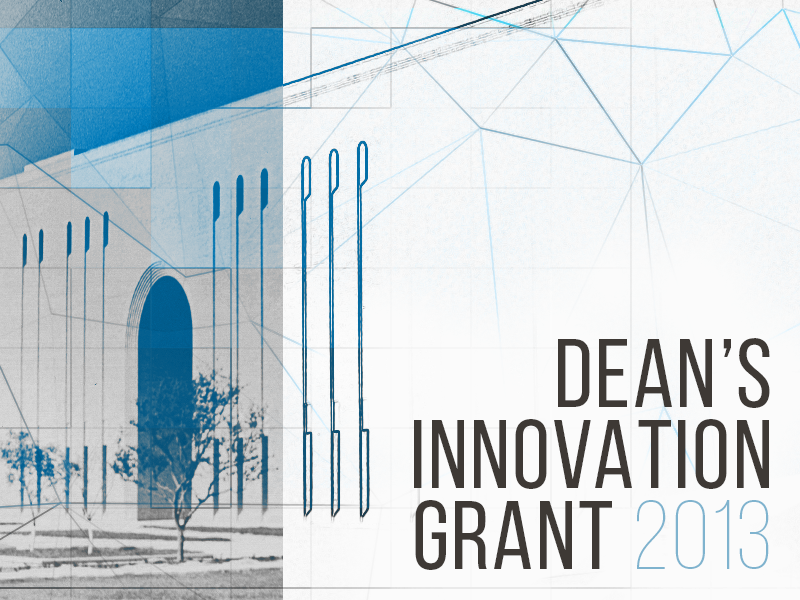
Dean's Innovation Grant 2013: Finding aid usage patterns and usability
Using a combination of web analytics and user surveys, the researchers planned to analyze the current usage of electronic finding aids at UNT within the context of the larger ecosystem of discovery tools available to researchers. The University of North Texas Libraries’ Dean’s Innovation Grant, formerly known as the Green Light To Greatness Award, provides funding to research and projects within the UNT Libraries that promote scholarship and contribute to the gathering of knowledge that helps improve our libraries, our university, and the community. Dean’s Innovation Grant 2013 Awardees Morgan Gieringer, Will Hicks Project Title Finding aid usage patterns and usability Project Description Using a combination of web analytics and user surveys, the researchers planned to analyze the current usage of electronic finding aids at UNT within the context of the larger ecosystem of discovery tools available to researchers. In doing so it was hoped that electronic finding aids may be improved through better operability with other discovery tools and the inclusion of more relevant content for the researcher. Contributor Biographies Morgan Gieringer is the Head of Special Collections in University Libraries Special Collections . She has a Master of Library Science from TWU. Will Hicks is the Head of User Interfaces in the User Interfaces Unit. He has a Master of Library Science and a Master of Management in Musicology, both from UNT. deans_office_in_the_news_honors_and_awards_dean_s_innovation_grant
Posted:
05/01/2013

Volunteer Books Needed for UNT’s Second Human Library
A Human Library will be held in the Forum @ Willis Library September 17 and 18, from 3:00 pm to 6:00 pm each day. Instead of print or electronic resources, the books in this library will be human beings who have experienced prejudice due to issues such as race, gender, age, disability, ethnic origin, class, sexual preference, gender identity, or lifestyle choices. Co-sponsored by UNT Libraries and the UNT Multicultural Center, the first UNT Human Library was held on February 17 and 18, 2013. At the event, in 15 to 30 minute personal conversations with students, members of the UNT community – graduate and undergraduate students, faculty, and staff – shared their experiences as Latinos, gays, Muslims, persons with disabilities, police officers, African Americans, vegans and many other groups who are often misunderstood . Both volunteer “books” and their “readers” were very positive about the experience. Feedback from one volunteer book indicated that the experience was “Very interesting and calm. I expected some harassment for being Muslim but everyone was very nice and considerate in asking questions. I only felt nervous at the beginning, but was otherwise very comfortable. Very happy to participate and would love to do it again.” Another book stated that it was a “Pleasantly surprising, excellent social awareness exercise. I believe I learned as much as my ‘readers.’” If you are interested in joining the book collection for the fall Human Library, please email Diane Wahl. And share this article with colleagues and students you think may also be interested in volunteering. Volunteer books do not have to be present for both days of the event. The time commitment would be one or two shifts of three and a half hours, plus a one hour training session a week or two before the event. The Human Library concept was developed in 2000 by members of the Danish Youth Organization Stop the Violence. It is now operational in more than 60 countries. public_services_in_the_news
Posted:
05/01/2013
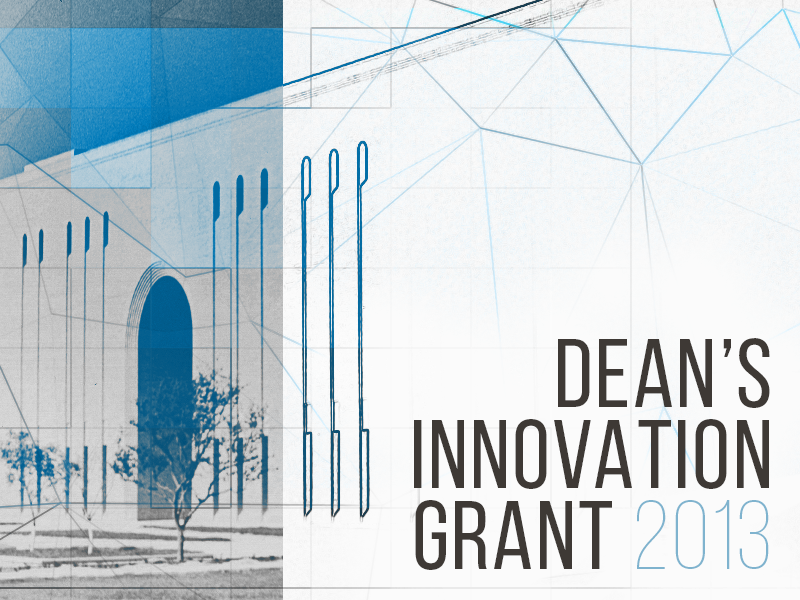
Dean's Innovation Grant 2013: Testing a novel method for the rapid digitization of archival materials
The proposed project sought to test a novel method for the rapid digitization of archival materials. The University of North Texas Libraries’ Dean’s Innovation Grant, formerly known as the Green Light To Greatness Award, provides funding to research and projects within the UNT Libraries that promote scholarship and contribute to the gathering of knowledge that helps improve our libraries, our university, and the community. Dean’s Innovation Grant 2013 Awardees Tara Carlisle, Jeremy Moore Project Title Testing a novel method for the rapid digitization of archival materials Project Description The proposed project sought to test a novel method for the rapid digitization of archival materials. Current digitization methods in the Digital Projects Unit utilize flatbed scanners, which take 40 seconds to scan each side of a letter-sized document at 400ppi in 24bit RGB. Due to increases in digital camera resolution and LED lighting technology a bespoke system can be built for under $5,000, which we hypothesize will significantly increase our throughput. The image capture time for each side of a letter-sized document would be less than 1/60th of a second, or 1/ 2400th of the time required by the flat-bed scanner. deans_office_in_the_news_honors_and_awards_dean_s_innovation_grant
Posted:
05/01/2013

Dean's Innovation Grant 2013: Optimizing Satellite Library Collection Awareness
Satellite libraries with specialized collections pose a problem in terms of collection use and awareness. This project sought to assess current use and awareness of Eagle Commons Library facilities and collections, to optimize use of the collections housed at the ECL through targeted programming in partnership with the Digital Scholarship Co-Operative, and to facilitate coordinated use of all Libraries facilities in Sycamore Hall. The University of North Texas Libraries’ Dean’s Innovation Grant, formerly known as the Green Light To Greatness Award, provides funding to research and projects within the UNT Libraries that promote scholarship and contribute to the gathering of knowledge that helps improve our libraries, our university, and the community. Dean’s Innovation Grant 2013 Awardees Spencer Keralis, Julie Leuzinger, Jesse Silva, Anjum Najmi Project Title Optimizing Satellite Library Collection Awareness and Use through Creative Programming Project Description Satellite libraries with specialized collections pose a problem in terms of collection use and awareness. This project sought to assess current use and awareness of Eagle Commons Library facilities and collections, to optimize use of the collections housed at the ECL through targeted programming in partnership with the Digital Scholarship Co-Operative, and to facilitate coordinated use of all Libraries facilities in Sycamore Hall. Contributor Biographies Spencer Keralis, Ph.D. is the Head of Digital Humanities and Collaborative Programs. He has a Ph.D. and a Master of Arts in English and American Literature, both from New York University. Julie Leuzinger is the Head of Library Learning Services. She has a Master of Library Science from TWU. deans_office_in_the_news_honors_and_awards_dean_s_innovation_grant
Posted:
05/01/2013
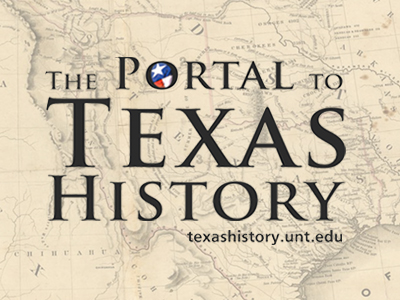
UNT’s Portal to Texas History Named Project of the Year by TLA
The Portal to Texas History, administered by the University of North Texas Libraries, has received the Wayne Williams Library Project of the Year Award from the Texas Library Association. The award, the only cash award presented by the association, recognizes a project that exemplifies the highest levels of achievement, professional standards and inspiration to other libraries. Martin Halbert, dean of the UNT Libraries, accepted the award April 25 during the association’s annual conference in Fort Worth. The Portal to Texas History was created in 2002 by the UNT Libraries’ Digital Projects Unit to provide online access to books, photographs, artifacts, maps, newspapers, letters, and other historic materials from more than 200 archives, historical societies, small and large libraries, museums and private collections from all areas of Texas. With more than 3.3 million pages of materials, the portal incudes many primary source historical materials, such as diaries and personal accounts of events and daily life. Browsers of the portal use these materials to learn history from the perspectives of those who lived it. To learn more, see the full article in UNT News: UNT’s Portal to Texas History named Project of the Year by TLA. digital_libraries_in_the_news_honors_and_awards
Posted:
04/29/2013
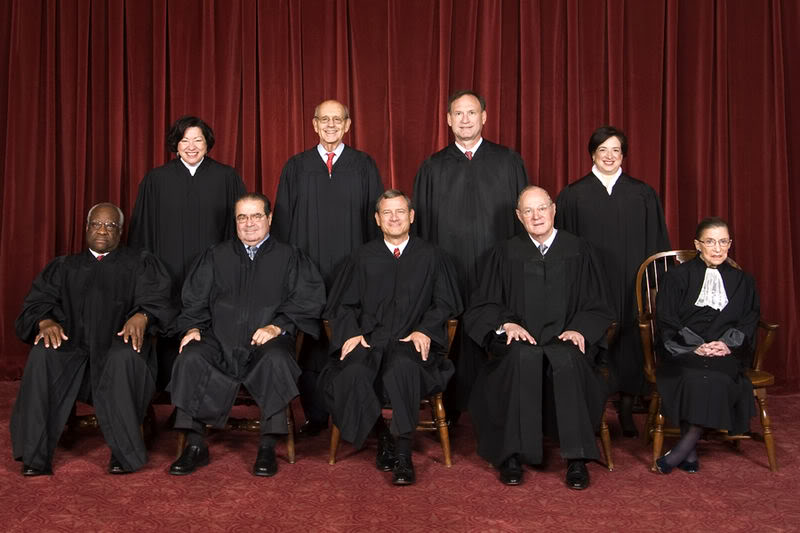
U.S. Supreme Court Hears Two Cases on Same-Sex Marriage
On Tuesday, March 26, 2013 the Supreme Court heard oral argument in Hollingsworth v. Perry, the challenge to California’s ban on same-sex marriage in that state. On Wednesday, March 27 Justices will hear oral argument in United States v. Windsor, the challenge to the constitutionality of the federal Defense of Marriage Act. On Tuesday, March 26, 2013 the Supreme Court heard oral argument in Hollingsworth v. Perry, the challenge to California’s ban on same-sex marriage in that state. The issues involved in this case are (1) whether the Equal Protection Clause of the Fourteenth Amendment prohibits the State of California from defining marriage as the union of a man and a woman; and (2) whether petitioners have standing under Article III, § 2 of the Constitution in this case. On Wednesday, March 27 Justices will hear oral argument in United States v. Windsor, the challenge to the constitutionality of the federal Defense of Marriage Act. The issues involved in this case include (1) whether Section 3 of the Defense of Marriage Act (DOMA) violates the Fifth Amendment’s guarantee of equal protection of the laws as applied to persons of the same sex who are legally married under the laws of their State; (2) whether the Executive Branch’s agreement with the court below that DOMA is unconstitutional deprives this Court of jurisdiction to decide this case; and (3) whether the Bipartisan Legal Advisory Group of the United States House of Representatives has Article III standing in this case. libraries_in_the_news
Posted:
03/27/2013
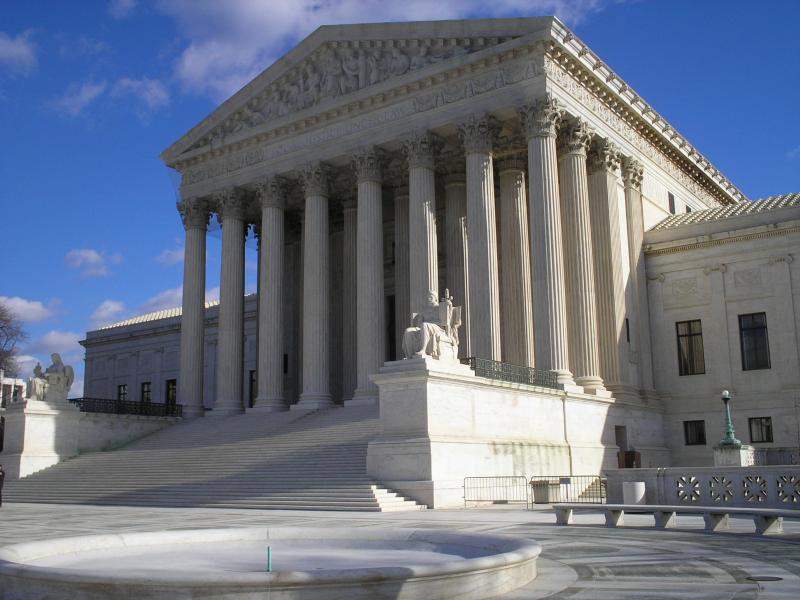
Kirtsaeng Overturned: A Win for Libraries
The United States Supreme Court held today that buying books abroad and selling them in the United States is not a violation of copyright law. Instead, it is well within the rights of an individual under the first sale doctrine. March 19, 2013 The United States Supreme Court held today that buying books abroad and selling them in the United States is not a violation of copyright law. Instead, it is well within the rights of an individual under the first sale doctrine. The publisher, John Wiley & Sons, argued that Kirtsaeng’s buying of books abroad and selling them in the United States was an infringement of copyright law via Wiley’s supposed exclusive right to distribute their books and §602’s import prohibition. Kirtsaeng countered that because his books were “lawfully made” and acquired legitimately, §109(a)’s “first sale” doctrine permitted the importation and resale of items without Wiley’s further permission. Both the district court and the United States Court of Appeals for the Second Circuit rejected Kirtsaeng’s argument. However, the United States Supreme Court held today that the “first sale” doctrine applies to copies of a copyrighted work lawfully made abroad. Pp. 7–33. Thus, today’s ruling overturns the Second Circuit’s previous holding. John Wiley basically was arguing that a geographical restriction should be placed on books that were deemed lawfully made, purchased and resold. The Court disagreed with such a geographical restriction. The Court further reasoned that library associations, used-book dealers, technology companies, consumer-goods retailers, and museums point to various ways in which a geographical interpretation would fail to further basic constitutional copyright objectives, in particular “promoting the Progress of Science and useful Arts,” Art. I, §8, cl. 8. For example, a geographical interpretation of the first-sale doctrine would likely require libraries to obtain permission before circulating the many books in their collections that were printed overseas. Pp. 19-24. Also, the “first sale” doctrine is also deeply embedded in the practices of booksellers, libraries, museums, and retailers, who have long relied on its protection. And the fact that harm has proved limited so far may simply reflect the reluctance of copyright holders to assert geographically based resale rights. Thus, the practical problems described by petitioner and his amici are too serious, extensive, and likely to come about to be dismissed as insignificant—particularly in light of the ever-growing importance of foreign trade to America. Pp. 19–24. These practical problems consist on the heavy burdens such a geographical restriction would place on libraries, museums, retailers… Today’s holding is great news for libraries, booksellers, museums, retailers, and other entities that purchase and resell items. This ruling is really good for consumers as well that rely on their legal right to purchase books, CDs, and other items “legally made” and give them as gifts to others. There is no telling how far reaching a contrary ruling could have gone in preventing one’s rights to do what they want with legally obtained property. Submitted by - Kristyn H libraries_in_the_news
Posted:
03/19/2013

Register Pallante’s Recommendations for Future Copyright Law
Last week, the Register of Copyrights Maria Pallante gave remarks at Columbia Law School. During these remarks, she suggests some changes in United States copyright legislation may be necessary to help various entities properly utilize current technology within the confines of the law. March 19, 2013 Last week, the Register of Copyrights Maria Pallante gave remarks at Columbia Law School. During these remarks, she suggests some changes in United States copyright legislation may be necessary to help various entities properly utilize current technology within the confines of the law. Such entities that may benefit from future changes consist of courts, libraries, schools, and for-profit organizations. During her remarks, Register Pallante posed the following suggestions and provocations: Any future legislative changes need to address new and emerging technologies, but also they must be flexible enough to apply to technologies not yet created. After all, in accordance with Moore’s law, some of today’s technology will soon be a moot point. The Digital Millennium Copyright Act (DMCA) may need to be revised as the internet and its features have changed since the DMCA’s inception. Registration requirements for copyrighted materials should be revisited. Could a new revised registration requirement solve some issues such as the orphan works problem? Or, would such a requirement burden original creators? Congress may need to take a look at section 109, also known as the first sale doctrine, depending on how the Court rules in the Kirtsaeng case in May or June. Should section 108 contain new copyright usage exceptions specifically tailored for higher educational institutions, such as for libraries? It sounds like a great idea to me! Congress may want to review the current copyright duration, which is a life-in-being plus 70 years. Should the later portion of this term be shortened to 50 years with an optional renewal of 20 extra years? Could the Copyright Office become an actual agency? Ergo, it could resolve questions of law or fact via advisory opinions. Hopefully Congress will address some of these concerns. At a bare minimum, Congress needs to investigate how best to grant institutions of higher education (including academic libraries) broader protection to digitize various materials and make these materials available to a wider selection of individuals. One way this could be accomplished as Register Pallante kind of alluded to, is to grant broader statutory exceptions to libraries when digitizing materials to which they currently own or to which they have agreed access. I am not certain giving the Copyright Office administrative authority to resolve disputes or to interpret legislation is a good idea. If such an agency were given such authority, even though their opinions may only be given in an advisory manner, personally, I would rather see the United States Congress pay more attention to these issues and produce new legislation that provides more flexibility to libraries in serving their patrons with current digital technologies. Congressional statutes providing libraries with avenues to share information carry much more weight than do advisory opinions. Submitted by - Kristyn H libraries_in_the_news
Posted:
03/19/2013

LibQUAL+® Library Service Quality Survey
The UNT Libraries are conducting an online survey about user satisfaction with UNT Libraries’ services that takes 5 to 10 minutes to complete. This survey is sponsored by UNT Libraries using a survey developed and administered by the Association of Research Libraries. Benefits: Provide the Libraries with information that is expected to lead to improved services. UNT student participants who provide their email address on the survey form will be entered in a drawing for an iPad mini. Odds of winning the iPad mini will be determined by the number of UNT students who choose to complete this survey. Participation: Completely voluntary. Withdraw at any time by leaving the survey without submitting it. Confidentiality: Name not requested. Student email addresses provided for the drawing to win an iPad mini are not saved with the other survey responses. Once they are saved, there is no way to link an individual’s responses to his or her email address. All research records will be kept confidential by the Principal Investigator and the Association of Research Libraries. No individual responses that are quantifiable will be disclosed to anyone because that data will be reported on a group basis. Comment data will be available to library staff for review; it may be cited in reports, presentations, or publications referencing the survey; there will be no way to identify who made the comments. For More Information: About your rights as a research subject, contact the UNT IRB at 940-565-4643. About the survey itself, contact Diane Wahl, Principal Investigator, 940-891-6897, or LibQUAL@unt.edu. This document is the informed consent notice. If you agree to participate, you may print this document for your records. By clicking on the survey link, you are giving your informed consent to participate in the survey. Click Here to Take the Survey! public_services_in_the_news
Posted:
03/04/2013

UNT Budgets in the Digital Library
Past issues of the UNT budget are coming to the UNT Digital Library. Historically, the university’s budget has been printed and distributed to the Libraries with copies available at the Willis Library Services Desk, Archives, and Texas Documents. Now, to support UNT’s drive toward sustainability, the Budget Office has ceased printing the document and makes the most current issues available electronically. What you may not know is that we are beginning to add past issues of the budget to the UNT Digital Library. This is part of a larger initiative by Archives and Rare Books to build an online collection of university records. As of February 2013, selected issues from FY1986 to FY2011 are available, and we are actively digitizing additional years. The budgets are all full-text searchable, making it easy to find the details you need. –submitted by Nancy Reis, Publications Specialist, Digital Libraries Division digital_libraries_collection_highlight
Posted:
02/20/2013

UNT Libraries Leads Information Literacy Collaboration
In our rapidly changing and information-rich world, information literacy is a critical skill that crosses all disciplines, learning environments and education levels. Unfortunately, many students enter post-secondary education with inadequate information literacy skills, something that Gayla Byerly, librarian and instruction coordinator at UNT Libraries, sees all too often. To learn more, see the full article in UNT InHouse: UNT Libraries leads information literacy collaboration. public_services_in_the_news_about_the_libraries
Posted:
02/19/2013
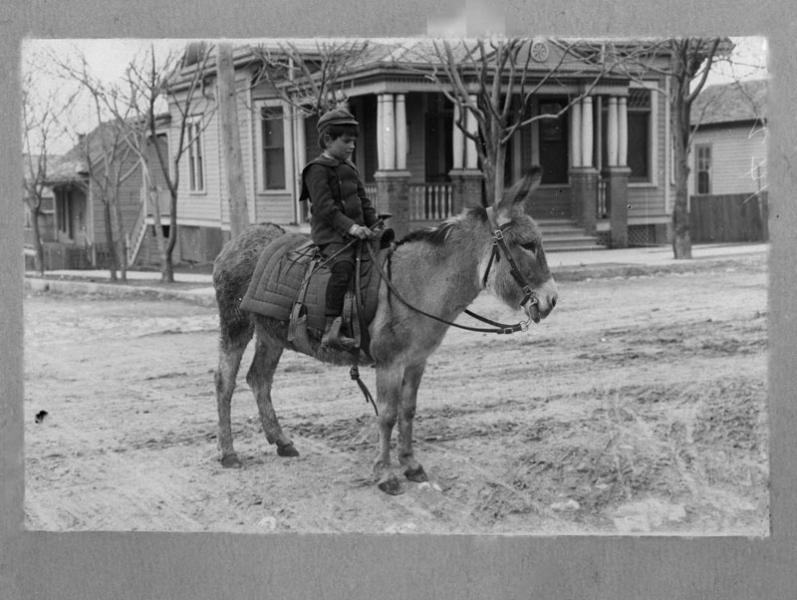
Please, Can I Keep Him?
When you’ve walked down a sidewalk or in the street outside your house, have you ever encountered a stray animal–like a donkey? When you’ve walked down a sidewalk or in the street outside your house, have you ever encountered a stray animal–like a donkey? Imagine bumping into a “red sorrel horse,” with a blind right eye, while moseying through San Antonio or Austin. Where could you keep it as you mentally word the ad for the newspaper’s “Lost & Found” section? Imagine your backyard after its owner came to get the horse. It’s easy to take for granted the occasional dog or cat wandering the neighborhood, just as it is obvious that these animals pose minor, if any, inconvenience. But reporting a gray mare (sometimes wandering with her colt), a brown donkey, or other large animal as an “estray” was a complicated procedure that required a visit, along with the animal, to the county clerk’s office for verification that the report was accurate. The newspaper “Lost & Found” section that we’re familiar with today originated with the “Estrays” section, and the practice of reporting large animals mostly died off around the mid-20th century. We can see on The Portal to Texas History that rural newspapers, for example the Rusk Cherokeean and Tulia Herald, continue to report stray animals still, mostly cattle. The most important question about picking up a large animal gone astray: Who’s going to clean up after it? If you’re interested in learning what types of animals were reported, visit the Portal and enter “estray.” –submitted by Ana Krahmer, Supervisor, Digital Newspaper Unit Photograph: [Boy on donkey] from University of Texas at Arlington Library https://texashistory.unt.edu/ark:/67531/metapth38442/ digital_libraries_collection_highlight
Posted:
02/18/2013
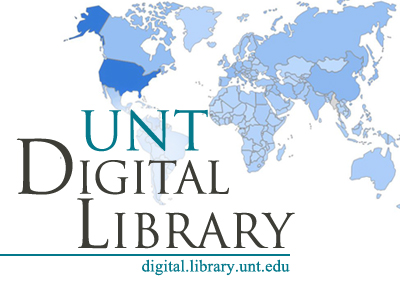
About the UNT Digital Library
The UNT Digital Library is home to materials from the University’s research, creative, and scholarly activities, and also showcases content from the UNT Libraries’ collections. Materials include theses, dissertations, artwork, performances, musical scores, journals, government documents, rare books, and historical posters. The UNT Digital Library is created and maintained by the University of North Texas Libraries’ Digital Projects Unit. The Digital Projects Unit supports the UNT Libraries with guidance and digital services including imaging, archival storage of electronic files, digital preservation, and metadata development. We pursue research opportunities in digital preservation and access and are active in state, national, and international professional organizations. digital_projects_unit_collection_highlight
Posted:
02/11/2013
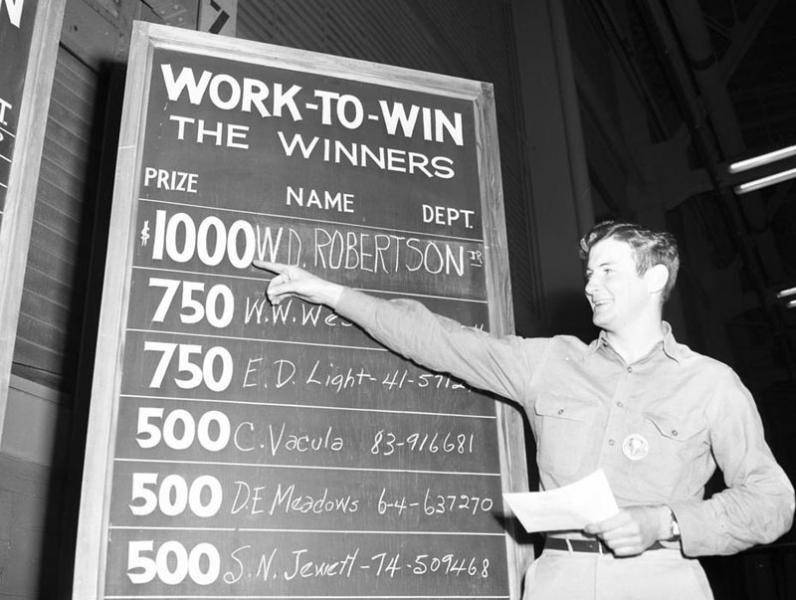
Top Ten Digital Objects
Some items in the Digital Collections are far more popular than others. Although you may have heard that there are a lot of items in the UNT Digital Library (DL) and The Portal to Texas History (Portal), some items are far more popular than others. Here are the top ten most popular digital objects in the UNT collections: 10. Biographical Encyclopedia of Texas (Portal) - 9,978 uses since June 2009. 9. Indian Wars and Pioneers of Texas (Portal) - 11,300 uses since June 2009. 8. Identifying factors that predict student success in a community college online distance learning course. (DL) - 12,049 uses since January 2010. 7. This man is your friend: Russian: he fights for freedom (DL) - 13,296 uses since January 2010. 6. Juvenile Delinquency: Findings and Implications (DL) - 13,574 uses since January 2010. 5. The Application of Hackman and Oldham’s Job Characteristic Model to Perceptions Community Music School Faculty Have Towards Their Job (DL) - 16,681 uses since January 2010. 4. Oswald in Morgue - Print (Portal) - 18,066 uses since October 2009. 3. Speaking for America…Bob Hope. (DL) - 24,627 uses since January 2010. 2. [[Clyde Barrow and Bonnie Parker in Morgue, Getaway Car and Funeral]][] (Portal) - 24,902 uses since May 2010. And the most popular item is… 1. [[“Barrow Gang” Wanted Poster, 1933 - Van Buren, Arkansas]][] (Portal) - 43,072 uses since February 2010. ![“Wanted” poster for Bonnie and Clyde][] For those who prefer the road less traveled, here is a sampling of less popular (but still interesting!) items that you might enjoy: * [[Two boys sitting on alligator]][] (Portal) * [[Letters and Drawings from Niagara Falls Students to the BRAC - July 2005]][] (DL) * [[Map of Europe as queen]][] (Portal) * [Stamp out black markets –with your ration stamps: pay no more than legal prices.][] (DL) ![World War II-era rationing poster ][] * [Catheads, Coalburners, and Cho-Cho Sticks: Folk Speech in Texas Prisons][], in The Bounty of Texas published by UNT Press (Portal) * [Fifty Common Birds of Farm and Orchard][] (DL) * [[Portrait of Carmen Calvo]][] (Portal) * [[Cast During the Filming of “Shooting Straight with Tim Holt”]][] (DL) * [Ant-Trap.][] (Portal) ![patent drawing of an insect trap][] * [The grocery ruined him.][] (DL) If you’d like more information about usage statistics, check out [Did You Know…that you can see usage statistics for items, collections, and contributing partners/departments?][] and Bob Is Popular. ![map of “world at one view”][] [World at one view.][] –submitted by Hannah Tarver, Head, Digital Projects Unit [[Clyde Barrow and Bonnie Parker in Morgue, Getaway Car and Funeral]]: https://texashistory.unt.edu/ark:/67531/metapth79005/ [[“Barrow Gang” Wanted Poster, 1933 - Van Buren, Arkansas]]: https://texashistory.unt.edu/ark:/67531/metapth78881/ [“Wanted” poster for Bonnie and Clyde]: /assets/images/news/content/wanted-poster.jpg [[Two boys sitting on alligator]]: https://texashistory.unt.edu/ark:/67531/metapth36974/m1/1 [[Letters and Drawings from Niagara Falls Students to the BRAC - July 2005]]: https://digital.library.unt.edu/ark:/67531/metadc17808/m1/ [[Map of Europe as queen]]: https://texashistory.unt.edu/ark:/67531/metapth190462/m1/1/ [Stamp out black markets –with your ration stamps: pay no more than legal prices.]: https://digital.library.unt.edu/ark:/67531/metadc452/m1/1/ [World War II-era rationing poster ]: /assets/images/news/content/stamp-poster.jpg [Catheads, Coalburners, and Cho-Cho Sticks: Folk Speech in Texas Prisons]: https://texashistory.unt.edu/ark:/67531/metadc38873/m1/207/ [Fifty Common Birds of Farm and Orchard]: https://digital.library.unt.edu/ark:/67531/metadc85732/ [[Portrait of Carmen Calvo]]: https://texashistory.unt.edu/ark:/67531/metapth200977/ [[Cast During the Filming of “Shooting Straight with Tim Holt”]]: https://digital.library.unt.edu/ark:/67531/metadc30597/ [Ant-Trap.]: https://texashistory.unt.edu/ark:/67531/metapth165108/ [patent drawing of an insect trap]: /assets/images/news/content/patent.jpg [The grocery ruined him.]: https://digital.library.unt.edu/ark:/67531/metadc2107/ [Did You Know…that you can see usage statistics for items, collections, and contributing partners/departments?]: https://intranet.library.unt.edu/FridayFrags/2012/february/february-24th/did-you-know [map of “world at one view”]: /assets/images/news/content/world-map.jpg [World at one view.]: https://texashistory.unt.edu/ark:/67531/metapth251716/ digital_libraries_collection_highlight
Posted:
02/08/2013
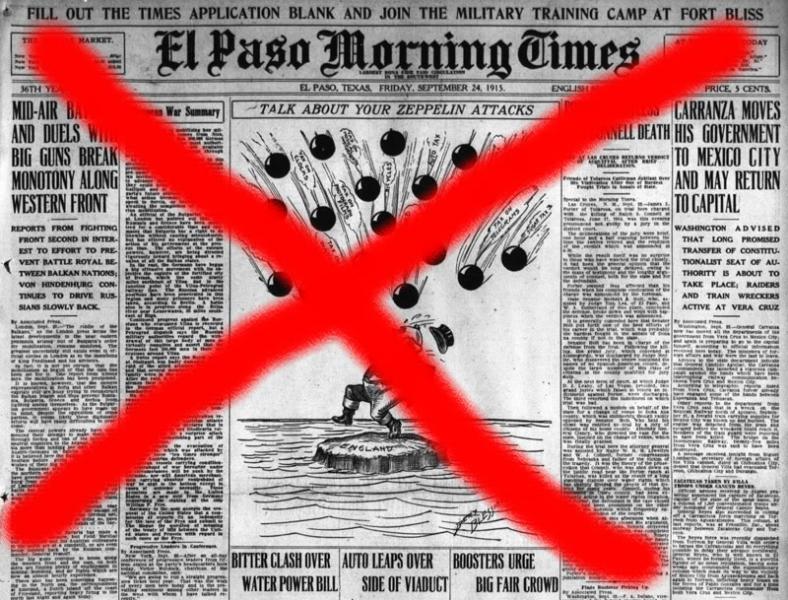
Too Much of a Good Thing
Sometimes when you’re performing a general search in The Portal to Texas History, you really don’t want 70,000 hits from newspapers. Here’s how to avoid them. So, sometimes when you’re performing a general search in The Portal to Texas History, you really don’t want 70,000 hits from newspapers. Here’s how to avoid them. Although the Portal makes it easy to restrict your search to newspapers, we don’t yet have a native way to restrict your search to everything but newspapers. It’s tempting–but not entirely precise–to handle the problem by eliminating the keyword “newspaper” from your search. Consider the following examples: Search String Results —————————— —————————————————————————————————- shoes Searching “everything” full-text with the keyword “shoes” yields 78,799 items in the results list. shoes -newspaper The same search with the keyword “newspaper” eliminated produces 2,361 items. shoes -newspaper -newspapers Eliminating both “newspaper” and “newspapers” gets it down to 2,172 items. ———————————————————————————————————————————– Seems logical, but the last two searches will exclude from the results list any items that have the word “newspaper” anywhere in the text or metadata. For example, the photograph “Young Woman in Bathing Suit” will be eliminated because that young woman happens to be looking through a cutout in a newspaper. A better solution is to tell the search system to eliminate anything that actually is a newspaper. This requires a “URL hack” to remove the newspaper “resource type.” Oddly, the easiest way to do this is to search for newspapers in order to display the appropriate syntax, and then insert a “-“ in the URL between the “=” and “dc_type.” Seem complicated? Here’s an example of how to do it: Go to the basic search screen in the Portal. Enter the search term “shoes” in the box, click the word “Newspapers” above the box, and then click the “Submit” button. Now look at the URL in your browser’s address bar. You should see https://texashistory.unt.edu/search/?q=shoes&t=fulltext&fq=dc_type%3Atext_newspaper. \ Insert a minus sign (hyphen) in the URL between “=” and “dc_type.” ![URL with minus sign placed before dc_type][] Press the “Enter” key on on your keyboard to resubmit the search. Voila! You now have a results list of 3,934 entries for items that are not newspapers, but do contain the word “shoes” in their text or metadata. You can learn more about searching in The Portal to Texas History by visiting our Basic Search Guide. –submitted by Nancy Reis, Publications Specialist, Digital Libraries Division digital_libraries_collection_highlight
Posted:
02/07/2013
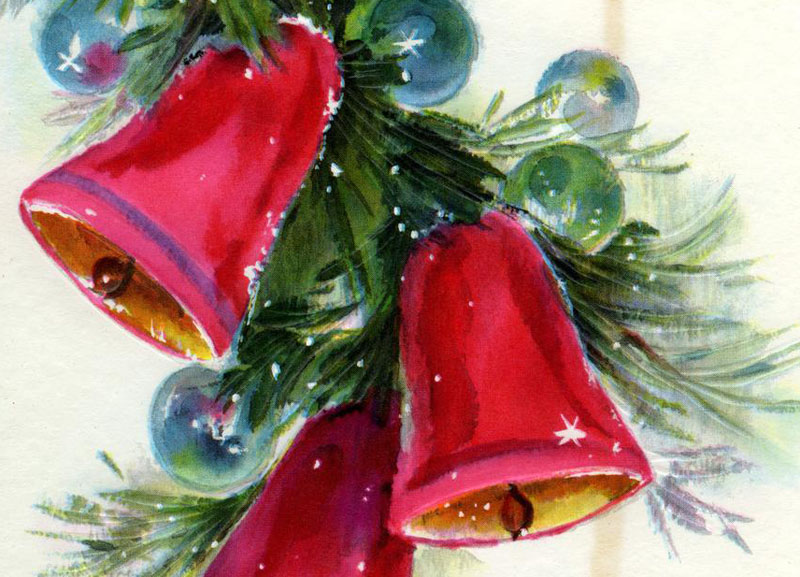
Holiday Spirit in the Digital Collections
Even when the December weather doesn’t feel wintry, there are plenty of things in the Portal and the Digital Library to help you get into the holiday spirit. Even when the December weather doesn’t feel wintry, there are plenty of things in the Portal and the Digital Library to help you get into the holiday spirit. The Digital Library has a selection of music recordings, including: Ensemble: 2007-11-27 - UNT Concert Choir Doctoral Recital: 2007-11-20 - Jessica McCormack, soprano Ensemble: 2002-11-25 - Collegium Singers and Baroque Orchestra Or watch this video of the Columbus Boychoir performing Christmas carols on An Album of Christmas Carols. There are a variety of Christmas-related items in both the Portal and the Digital library such as: [Christmas Decorations at Night], Children And Dog At Christmas, [Photograph of a Christmas Tree in the Kammlah House] and other photos Christmas trees as a cash crop for the farm A Comfort Christmas Christmas overseas gifts (poster) Christmas cards There are also some items related to Succot and wintertime. Find more holiday-related items on the Portal and the Digital Library. –submitted by Hannah Tarver, Head, Digital Projects Unit digital_libraries_collection_highlight
Posted:
02/07/2013
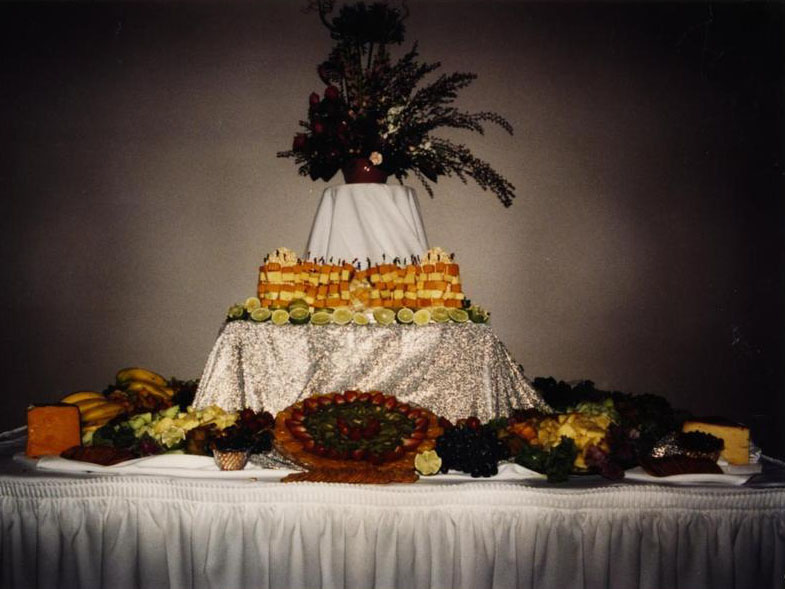
The Portal's Hidden Gems: Holiday Recipes
Looking to impress the guests at your holiday potluck or dinner party? Consider one of the historical recipes available on the The Portal to Texas History. Looking to impress the guests at your holiday potluck or dinner party? Consider one of the historical recipes available on the The Portal to Texas History. A book from the Denton Public Library’s collection, 50 Selected Recipes by 50 Denton Women, is available as part of the digital collection “From Plowshares to Diplomas: Digitizing Early Denton History.” It was compiled and edited by “Three Married Men” of The Central Presbyterian Church in Denton, Texas (now St. Andrew Presbyterian on 300 West Oak Street), with the proceeds of the book sale benefiting the church’s “Young People’s Organization.” The book includes, as advertised, 50 recipes for a variety of courses, from Fried Celery to Potato Cake, along with advertisements for local businesses. Included in the book is Mrs. R. L. Marquis’ recipe for Divinity Candy. If you have some lemon Jello™ on hand, consider recreating Mrs. J. W. Erwin’s Carrot Salad or Mrs. J. H. Boyd’s Bavarian Plum Pudding. To view more historical books, photographs, letters, newspapers, or objects related to food and cooking, search the Portal using the subject terms “Food and Cooking” or the keyword “recipes.” Happy Cooking! digital_libraries_collection_highlight
Posted:
02/07/2013
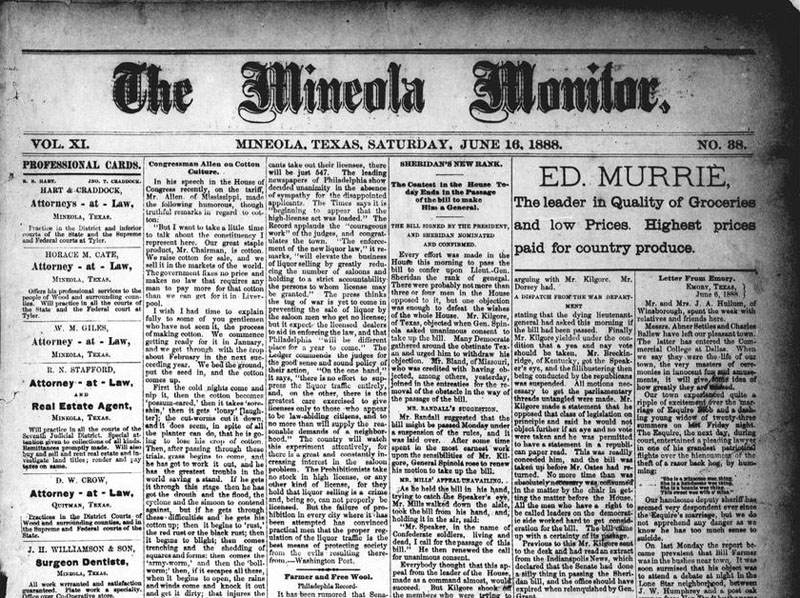
Three Newspaper Titles Added to the Portal
The Mineola Monitor, the Crosbyton Review, and the Sweetwater Reporter are now available on The Portal to Texas History. The Mineola Monitor, the Crosbyton Review, and the Sweetwater Reporter are now available on The Portal to Texas History. These newspapers serve as archival records of their respective towns’ existence, providing not only valuable information to the genealogy researcher, but also documenting historic local events. For example, the Wood County, Texas, newspaper industry boomed during the late 19th-century because railroads were literally racing each other to get to Mineola. The Texas and Pacific Railroad and the International Great-Northern Railroad competed to complete tracks to Mineola in 1873. The International Great-Northern won by reaching the town fifteen minutes before its competitor. The history of Mineola continued to be tied to the railroads, and its timber industry and later oil industry greatly profited from it. All newspapers available on The Portal to Texas History are fully text-searchable and contain issue-level metadata description. This facilitates primary source research. Genealogists often comment on how helpful it is to type in a last name and immediately find information about where their ancestors had traveled, about how they passed away, and about what they wore in their weddings. These new additions to the Portal and to the Texas Digital Newspaper Program serve as primary source evidence for researchers, and it is through the generous support of the Tocker Foundation that these three titles are now available to the world. –submitted by Ana Krahmer, Supervisor, Digital Newspaper Unit digital_libraries_collection_highlight
Posted:
02/07/2013
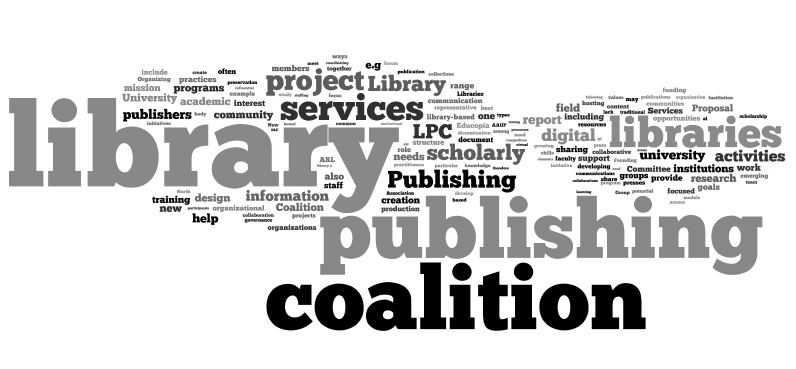
Libraries to Help Create Library Publishing Coalition
UNT Libraries, in collaboration with more than 50 other academic libraries and the Educopia Institute, has joined a two-year (2013-2014) project to create the Library Publishing Coalition (LPC). The project emerged from conversations between Purdue University, the University of North Texas and Virginia Tech regarding the need for a community dedicated to advancing the field of library publishing. To learn more, see the full article in UNT’s InHouse: UNT Libraries among leaders of digital age Library Publishing Coalition. digital_libraries_in_the_news
Posted:
01/23/2013